




From 2019 onwards, the University Clinical Aptitude Test (UCAT) will be replacing the UMAT as part of the admission process for students interested in studying medicine and dentistry. While the UCAT is entirely new to Australian students, it has been used by a consortium of UK universities for over 10 years.
One of the biggest differences between the UCAT and the UMAT is that the UCAT is a computerized test, where students will be invited to testing centres on an assigned date. They will also receive their results straight after their completion of the test.

Additionally, the UCAT comprises of 5 subtests as opposed to 3 in the UMAT, and consists of 233 questions with an allotted time of 2 hours. This, in particular, will prove quite challenging when compared to the UMAT, as the UCAT requires a substantially higher amount of questions to be completed in a shorter amount of time. There are 5 different subsets as seen below:
Decision Making
Quantitative Reasoning
• Abstract Reasoning
Situational Judgement Test
The purpose of the UCAT is not dissimilar to the UMAT, which is to test the cognitive abilities and behavioural attributes of the candidate. The difference in structure of the UCAT necessitates a rigorous revision of teaching approaches, yet the core focuses do not change. Our team of high performing medical students and doctors has been working tirelessly to provide a comprehensive course for candidates sitting the UCAT for the first time in 2019.
Our UCAT course consists of 3 different components of weekly classes that run for 8 weeks each:
The Theory term will introduce and explain the unique learning approaches for each question type in each subtest. Each weekly lesson commences with a 2 hour theory class, in which all new theoretical knowledge is taught. This will be followed by a 1 hour Problem Based Class, where students attempt and receive feedback on questions related to the newly taught material in timed conditions. Finally, there will be a 1 hour Tutorial class, where tutors revise the content of the week before and offer opportunities for students to voice their concerns or queries.
It cannot be stressed strongly enough that a successful attempt at the UCAT necessitates a deeper understanding of the concepts at hand. Our tutors, being highly performing medical students themselves, will use their experience in helping you to perfect your approaches to the various subtests of the exam. For example, given that Section 5, the Situational Judgement Test, requires a nuanced understanding of medical scenarios and responsibilities, our team is well-equipped to help you step into a medical student’s shoes.
At the end of this course, the student will be equipped with all of the learning approaches required for each of the 5 subtests.

We recognise that the gap in skill between learning the theory concepts to performing well in exam conditions is considerably large. Accordingly, we have introduced the Extension term as a new, bridging addition to our course. The extension term will be entirely question-based, where we cycle through different subtests each week and enforce the respective time limits so that students become acclimatized to the pace and dexterity required to excel in the UCAT. This course will be another opportunity for students to seek targeted teaching and intervention.
Finally, the Mock Exams term aims to simulate exam conditions to the highest possible level of accuracy. Students will attempt a 2 hour UCAT exam under timed conditions one week, and come to a 3 hour review class the following week. During the review classes, tutors will go through exam answers, revising the concepts taught in previous courses and introducing new valuable information. The 8 week mocks term will consist of 4 mocks and 4 review classes. We foresee that the most difficult challenge that students will face in preparing for the UCAT are the time limits for each subtest. Therefore, it is essential that students practise in an accurate, timed environment. Our Extension and Mock Exam courses will be especially targeted at this aim.
Our team of highly performing medical students have the insight into how to excel at aptitude tests and always go above and beyond for our students. The structure of our classes encourage students to identify and highlight their weaknesses. Additionally, we run a number of free seminars for our students to revise and strengthen their abilities.
(02) 9874 7045
admin@acehsc.com.au
acehsc.com.au
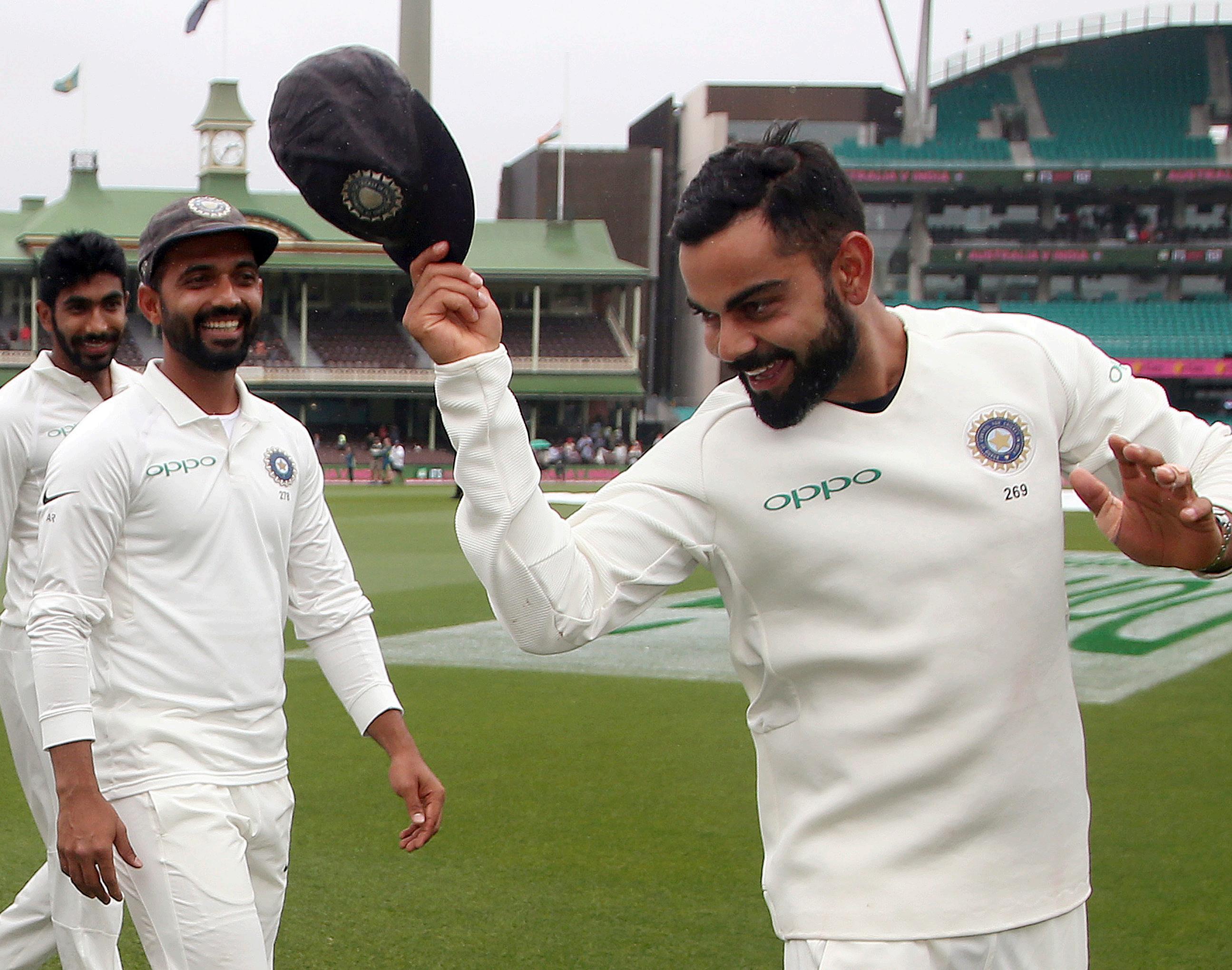







Preparation and belief seemed to be the keys for this epic success.


Neha
MELBOURNE
Preeti
CONTRIBUTORS
Ritam


ADVERTISING
Shriti
ADVERTISING ASSISTANT






Indian
INDIAN
Level
GPO
Email: info@indianlink.com.au
 BY PAWAN LUTHRA
BY PAWAN LUTHRA
4 months after India gained independence in 1947, its cricket team sailed from Mumbai to Darwin to undertake their first tour of Australia. The Indian cricket team, in spite of some outstanding players such as Vijay Hazare, Vinoo Mankad, Lala Amaranth and Dattu Phadkar, were thoroughly thrashed by the Aussies, losing the five-Test Series 4-nil with one Test drawn. Since that 1948-49 contest, India has never won a test series here, till Virat Kohli’s team did so just over a week ago.
For Kohli and his band of 18 players, what an absolutely thrilling moment after the near-total massacres which the Indian party in tours past has endured in Australia. Even for the Indian Australian fans, there was much to cheer about after years of dismal performances by their team.
For a team which is known for snatching defeat from the jaws of victory, the focus and dedication shown this time around was indeed commendable.
In 1948-49, the great Sir Don Bradman playing for Australia noted this about the Indian team: "I first saw them play in Adelaide when South Australia were their opponents. I made a century in this match, and in doing so formed the conclusion that our Test team would make a lot of runs against them for two reasons: firstly, their bowling, whilst reasonably steady and sound, lacked a really fast bowler, and what is probably more important, a really high-class spinner. Secondly, to my surprise, they were weak in the field."
Fast forward 71 years and there was a rich choice for the selectors in picking their pacemen and their tweakers. With five fast ball specialists and three spinners, the team had a depth which was seldom seen in their line-up.
Over the years, the focus on fielding, largely driven by the players’ commitments to IPL, has also been razor sharp.
Yes, the Australians were without their dynamic duo of Smith and Warner, serving out their punishments after sandpaper-gate. Between the two, they were probably good for about 150 runs per innings; in fact, David Warner has the prize of scoring the 4th fastest Test
century against the Indians on their last tour. Be that as it may, if the situation was reversed, with Kohli and Pujara sidelined from the Indian team, there would still have been enough depth in the team to progress the cause. That the Australian team was caught short with the lack of good options to select the national team from, is something which the administrators need to attend to beyond the return of the sidelined Smith and Warner.
Success also wins you new friends. The support which the Indian cricket team got from their adoring fans was at levels never seen before in Australia. Be it the Bharat Army or the Swami Army or the lone brand of the tricolourturbaned Gurnam Singh, the chants, the songs and the flag waving created a buzz around the various grounds. Well done, folks, your excitement was certainly infectious.
And finally, to the Indian captain Virat Kohli: you came, you saw, you conquered. Not only did you win the Border Gavaskar trophy, you also won the hearts of the Aussies, who, to borrow a phrase from the Federal Minister for Sport Bridget McKenzie, have all but declared they have a cricket crush on you.
Well done, Team India.

Link is a fortnightly newspaper published in English. No material, including advertisements designed by Indian Link may be reproduced in part or in whole without the written consent of the editor. Opinions carried in Indian Link are those of the writers and not necessarily endorsed by Indian Link. All correspondence should be addressed to:












We shared a Facebook post lauding cricketer Cheteshwar Pujara for his brilliant play during the series.
Leigh D’Silva wrote: Trump definitely needs him to build his wall.
Manjunath Aradhya wrote: Backbone of Indian team and suitable replacement of The Great Wall (Rahul Dravid).
On B Vanlalvawna being honoured as Indian Link’s Person of the Year. Livingston Chettipally wrote: Congratulations Hon Vanlal Vawna, Consulate General of India and Mrs Rosy, may God bless you with abundance and grace.

Saba Nabi wrote: Without a doubt he is the favourite amongst the Indian diaspora.
Mala Mehta wrote: Excellent choice Indian Link, congrats Rosy and Vawna!
Shantha Viswanathan wrote: What a great choice Indian Link. Congrats CG Hon. Vanlal Vawna.
Vandana D'souza wrote: Excellent choice Indian Link.
Sreeni Pillamarri wrote: Wow congrats.
Chandra Kishore wrote: Congratulations.
Anagan Babu wrote: Right selection, well done, Indian Link.
Congratulations Hon. Vanlal Vawna.
Mittu Gopalan wrote: Wow, what an amazing selection, Indian Link! You have everyone’s unanimous support in this choice!
People’s choice is definitely our absolute favourite CG Hon Vanlal Vawnaji and his amazing wife Dr Rosy Lalmalsawmi Khuma, the incredible woman behind it all. This team does India so proud and we are honoured that Australia was blessed to have them for a term. We are grateful for all your tireless services.
Indu Harikrishna wrote: Congrats!
Rosy Lalmalsawmi Khuma wrote: Thank you Indian Link for this honour bestowed on Vanlal Vawna. You are the best in class!
I think we are going to set a new record here. The maximum amount of time lost for the minimum amount of rain!
Harsha Bhogle, Indian cricket commentator
We posted a picture of this temple in southern India that’s famous for ‘granting visa wishes’ of Indians. Most of you guessed it right: it’s Chilkur Balaji Temple in Hyderabad, Andhra Pradesh. Well done, Arumugam Gokulraj, Roopa Avasarala.

Forget how bad Australia have been, with this attack India would have been a good chance of winning even if Smith and Warner had played.

Brydon Coverdale, Australian quiz personality
Well done guys. Enjoy the no packing day tomorrow. One week here has been hectic with 3 time zones.
Ravi Shastri, Team India coach

If like me you have been coming to Australia since 1991 with no hope of winning a series, then this is a huge moment.
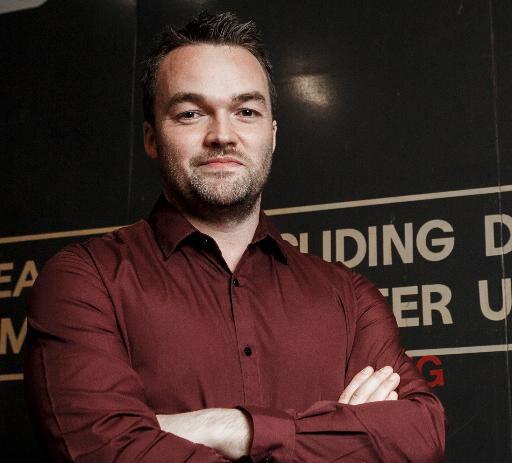
Harsha Bhogle, Indian cricket commentator


India beat Australia by 2-1 in 4 match series. That's Team India's way of wishing us a Happy New Year 2019.
Ravindra Jadeja, Indian cricketer

RAJNI ANAND LUTHRA’s article on 94-year-old Kailash Bhatnagar’s first art exhibition received a tremendous response.

Suman Mathur wrote: I missed your exhibition! You are still so sharp of mind, skilled and persevering. May God give you the strength to continue with your creative pursuits.
We shared this breathtaking picture of a very special 'pink' water body in Australia and asked people to guess where it was. Jillian Abery, Varada P Shinde and Sachin Wakhare got it right: it's Spencer Lake in Western Australia. Good guessing!

Time to leave Manchester .. By the time I arrive in Sydney I will have watched a Big Bash game .. Had a few vinos .. watched 6 movies .. Had 8 hrs kip .. watched the Aussies lose another Test Match .. Michael Vaughan, former English cricketer
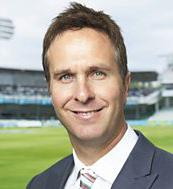
Test match batting at its best by Pujara. @cheteshwar1 has been the difference between the 2 teams for me.
Sachin Tendulkar, former Indian cricketer
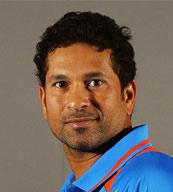

Indian Link’s snapshots and videos from the traditional afternoon tea hosted by Scott Morrison for Team India got over 200 likes and 60 shares.
Gary Bhinder wrote: Very nice!
Gauram Berry wrote: Cha gaye ji!
Ramesh Chand wrote: When chips are down all helps. Haven't seen that in the past but positive. Trophy goes to India. Good game well played, healthy competition. Loved every minute of it.
Sanjay Anand wrote: Very nice.
Arun Pandit wrote: Super!
Steven Knight wrote: The PM looks fat! Too much taxpayers’ money. Pushpak Saglani wrote: Mast bat karta hai Kohli. Hope it turns well in Sydney.
Aman Nigam wrote: Pushpak Saglani Yes, we definitely need to win, at least for the sake of the bowling unit!

Neha Devarakonda wrote: I nearly started applauding at my laptop screen!
Seema Chopra wrote: Kohli, you are the best!
Rosy Lalmalsawmi Khuma wrote: The day I got Kohlified!
My brave, bold prediction is that I think Virat Kohli is not going to get a hundred and we’re going to knock India off over here.
Australian cricketer Pat Cummins in July 2018
Loved #Viratkohli press conference after winning 3rd test against Australia. Agrresive, Super Confident and just the right amount of Arrogance.
Shekhar Kapur, Indian filmmaker

What a day for Indian cricket! To think the Aussies would pray for rain to save them!
Rajdeep Sardesai, Indian news anchor

It's spinning out of control for the home team. Made to follow on in Australia for the first time since 1988.
Champion performance by our boy @imkuldeep18
Suresh Raina, Indian cricketer

For 17- and 18-year-olds, December can bring many emotions: elation over the joys of finishing secondary school, anxiety over the futures, and a sense of catharsis when the dust eventually settles.
We congratulate the High School Certificate Class of 2018 and speak to a few of them about their journey.
What goals did you set at the start of the year, if any? Did they change? Did you achieve them?
Venkatesh (Jishnu) Thangallu: My initial goals were into an engineering field, and to score well so more opportunities are available to me. As the year progressed the field of aeronautical and aerospace
engineering allured to me. I believe I have achieved these goals rather well.
Keshav Manaktala: From the beginning of Year 12 my mind was mainly set on studying law at university so I set this as a goal to achieve.

Kiran Gupta: I didn’t really set a huge amount of goals. I prefer to do the best I can and take opportunities as I can. I certainly did not expect to top the state and achieve an ATAR of 99.65 though.


Rohan Bhatia: My goals for the year were to achieve the All-Rounder award, receive a 99.50 ATAR and to ensure the HSC would not impede on my social life. These goals remained consistent throughout the year and I remained determined to achieve them. I ended up receiving the All-Rounder award
ATAR: 97.25
Subjects: English Standard, Physics, Chemistry, Engineering Studies, Mathematics Extension 1, Mathematics Extension 2
Achievements: All-Rounder’s Honour List
and actually achieving the exact ATAR I wanted - 99.50. I remained social and involved in the community with my part-time work, community service and participation in both soccer and tennis twice a week.
Rohan Agrawal: The main goal I had at the beginning of HSC was to get at least 95 for my ATAR, and mainly target a 90+ for the majority of my subjects. I didn’t achieve all of my goals, but I did get an ATAR of 96.05 that allowed me to do my desired degree of commerce and economics as my career goal is investment banking, so overall I was happy that I maintained balance in my social life and still achieved my ultimate goal. Sourish Iyengar: Initially my goal was to achieve a 99 ATAR. Closer to the final HSC exams my target dropped to 98+. Despite

 JAMES RUSE AGRICULTURAL HIGH SCHOOL
JAMES RUSE AGRICULTURAL HIGH SCHOOL
ATAR: 99.95
STATE RANKS: 7TH IN 4U MATHS
not achieving this rank (instead a 97.25). I think it was imperative that I set such a high target early on. In doing so, I may not have achieved my goal, but still strived to perform to the best of my ability whilst also managing other non-academic commitments (e.g. hockey). Another goal of mine was to study Data Science at USYD or UNSW in 2019. I received offers from both universities and am planning go to USYD.
How did you manage stress throughout your final year of high school?
Jishnu: I managed it by keeping actively aware of my stress and to have faith in my abilities. Throughout my year I have learned to keep a balance between not being too lax
The class of 2018 share their stories
IVAN SHEN
"I hope to stay involved with my school and be proactive within the school community, helping the students there" Jishnu Thangallu
Knox Grammar
ATAR: 99.25
Subjects: Mathematics General 2, English Advanced, Legal Studies, Economics, Business Studies
Achievements: Dux of Legal Studies, All rounders list, State rank NSW #10 Legal Studies

(in which I went too slowly), and being too stressed (in which I was very susceptible to errors). The fine line between them is what I strived to be in the exam situations and achieved.
Keshav: Going to the gym to take my mind of studying and to stay fit which is important during Year 12.
Kiran: I did a lot of music. I did the school musical as well as doing my CMUS diploma and trying to perform as much as possible. Before I got sick, I also played tennis with my friends when I could and made sure that I ate healthily throughout the exam period.


Rohan B: To be honest I didn’t really feel stress at all until about 3 days before my first HSC English exam. To manage it, I would go to the park and kick around my soccer ball every couple of hours to just clear my headspace.
Rohan A: A lot of my stress relief came from watching television shows and listening to a lot of music, as it gave me a sense of comfort. It allowed me to be relieved from studying for a while and an opportunity to turn off before starting up again. I didn’t let it fully occupy
my time as well, because studying is more important and time consuming for subjects that are very memory based. My brother, who himself state ranked in Maths Ext 2 in 2016, helped me a lot in mathematics Ext 1 and Ext 2 and guided me to keep my nerves calm all through-out the year.
Sourish: I created a timetable where I was rewarded 1 hour to do whatever I wanted for every 2 hours I studied during the exam period. Whenever an exam block was over I ensured I properly recuperated and relaxed with friends before zoning into my regular study habits again.
Do you think technology and social media are helpful for study, or are they distracting?
Jishnu: They could be both distracting and useful. I used my social media primarily as a medium to collaborate with other students, in which my doubts would be sent and discussed with my peers and their doubts to me. In this way we would benefit together. I have spent significant amounts of time socialising with friends and enjoying my
ATAR: 99.65
Subjects: Music 1, English Advanced, English Extension, French Continuers, Italian Continuers, Mathematics, French Extension, Italian Extension
Achievements: 1st in state in Music 1, All-Rounder Honour List
ATAR: 99.95
time, but I must admit that it helps make an enjoyable and relaxing time to cool off a little. I had to be wary of not going on social media too often for unproductive things, but I think I handled that well.
Keshav: I think that social media was extremely beneficial over the course of Year 12 because it enabled me to be a part of several group conversations on Facebook for all my subjects and allowed me to message friends if I ever had a question to be answered.


Kiran: Certainly a double edged sword here but I found technology to be more
PYMBLE LADIES’ COLLEGE
ATAR: 99.95
useful. I think it is extremely beneficial to have notes digitalised and easily locatable (especially considering how many times I lost them!) However, certainly there were times when I need to do a self-imposed phone hiatus because it was just too distracting. I actually deleted social media through the HSC block on my phone and kept it only on my computer which stopped me checking regularly which was quite useful.
Rohan B: It definitely can have both positive and negative consequences on studying however, as long as you have some selfcontrol and will to study, technology and the
LOUISE CAI
JAMES RUSE AGRICULTURAL HIGH SCHOOL
ATAR: 99.95
"Do subjects that you are interested in; don’t be influenced by family and friends and things like scaling"
Keshav Manaktala
ATAR: 99.50
Subjects: Mathematics, English Advanced, Economics, Business Studies, Studies of Religion II
Achievements: School Dux (2018, 2017, 2016), HSC
All-Rounder 2018, Senior Leader of Academic Life, Sydney Scholars Scholarship at University of Sydney
ATAR: 97.25
Subjects: English (Advanced), Economics, Mathematics, Biology, Physics, Mathematics Extension 1
Achievements: Band 6 in English (Advanced), Economics, Mathematics, Biology (Accelerated-Completed in Year 11) School awards including WSHS Foundation Cup (for balancing academic and sporting excellence in hockey), invited into the Dayell Scholars program by the University of Sydney.


wasn’t completely detrimental to my studying pattern.
Sourish: Overall, I believe that technology and social media are helpful. Technology allows you convenient access to a wealth of information in an instant. This is imperative during the HSC where one will be constrained by time during the whole course of the year. I believe social media can be helpful depending on how it is used. For the most part I used social media as a forum to communicate to peers with reference to questions I struggled in, or areas where I needed to develop my understanding of certain concepts. This utilization of social media can be extremely beneficial and allow an individual to quickly fill up gaps in their knowledge.
internet as a whole is an excellent medium to locate information much more conveniently than books. Social media itself can be fostered to create a platform where students can ask and answer each others’ questions. I myself found online forums like ATAR Notes to be quite useful throughout the year.
Rohan A: It depends. I can’t really say much
because I didn’t have social media, so I wasn’t distracted by that. In fact I got my first smart phone only after my HSC exam. Overall, technology can be distracting, especially because there are so many options to use it for – TV shows, YouTube, etc. I feel like I could have procrastinated less on videos and games on my computer, but it
In 2017, South Australia and the Northern Territory trialled an electronic version of their end-ofyear English exam. Do you think this is a possibility for your state? What kind of impact do you think it could have
on study patterns and the exam in general?
Jishnu: This surely is a possibility in our state, and I believe the implication is that it helps bring society as a whole to be more familiar and accustomed to the interface of technology.
Keshav: I do think that in the coming years more and more exams will be done electronically, although I personally would not be in favour of such a decision. After completing the HSC, I believe that writing fast by hand is a skill that can differentiate yourself from others and there are also several studies that support the beneficial use of writing by hand.
Kiran: It would be a logistical challenge but I would love it! As someone who had very messy handwriting, it was a nightmare for me to fix and I would have much preferred to just focus on actual skills in the course rather than handwriting as well. It would be very expensive though. I ended up handwriting everything from about September to improve my speed and legibility so I think computer
OVER THE PAST 5 YEARS OUR STUDENTS HAVE ACHIEVED: State Ranks ATARs above 99.00 Band 6 results in Physics and Chemistry COME AND MEET THE BEST TEAM IN THE STATE
32+ 263+ 600+
"Social media in Year 12 can be a double-edged sword. I deleted social media on my phone and kept it only on my computer which stopped me checking regularly – that was quite useful." Kiran Gupta
ATAR: 96.05
Subjects: Advanced English, Economics, Chemistry, Maths Ext 1 and Maths Ext 2.
Achievements: Band 6 in Mathematics Extension 1, Mathematics and Chemistry Olympiad
usage in exam would mean more focus on learning content and greater ability to produce high quality content in the exam.
Rohan B: I could definitely see NSW shifting to an electronic HSC in the near future with most professional careers no longer requiring the skill of writing, and rather being more reliant on computer technology. I think this would actually have a negative impact on study patterns however as learning and understanding content from textbooks is more effective through the means of writing out notes and essays by hand.
Rohan A: It definitely could be a possibility for NSW, especially because English was designed to test our understanding of a text in reference to their respective contexts or to
a particular concept or idea. Digitising the tests allows a shift of focus from time-based restrictions to a more relevant assessment of the understanding of a text to answer a question. However, it doesn’t entirely stop the memorisation pattern that has been happening for a long time, because people still need to remember the textual and visual evidence to answer the question. Digitising the tests, however, could end up spreading to other subjects as well, especially the sciences, and that can be very problematic because science is a very writing-based activity.
Sourish: I think it’s definitely possible. During HSC I replaced my books with my laptop to take notes, so it would’ve been an easy transition for me. Rather than writing
ERIC MOON
NORTH SYDNEY BOYS HIGH SCHOOL
ATAR: 99.95
STATE RANKS: 7TH IN CHEMISTRY
my essays by hand while practicing, the implementation of an electronic exam would influence me to practice typing at a greater efficiency with reference to English.
Favourite quote from a teacher?
Jishnu: RTFQ: Read the full question
Kiran: “Try to think of this course as more than a mark, but a new way of living” –English Extension Teacher (we did a course focused on global studies and global ethics)
Rohan B: [Canteen lady increases prices by 20% for ‘inflation’], Economics teacher: 20%? 20%!, you go tell her inflation is at 2% and the nuggets are a goddamn rip-off!
Rohan A: Remain focused.
Sourish: “Practice doesn’t make perfect, practice makes better”. The quote resonates with me because it reinforces that every individual should strive to reach new heights no matter what level they are in the present.
What would your advice to future final year students be?
Jishnu: This is your last year at high school. Live it up and enjoy. Be happy with the results you have, but always strive to improve. An exam is like playing at a championship. You need to learn how to play (learn the content), then you go play, play and play some more (practise a lot, exposing yourself with a wide variety of questions, from exam papers, to textbooks, to your friends and teachers in class). Don’t over-rely on notes. Rather, use them as your training wheels and when you do have some momentum going, use them sparingly.
Keshav: Do subjects that you are interested in and don’t be influenced by family and friends and also things like scaling, because at the end of the day a high mark in a low scaling subject is better than an average mark in a high scaling subject.
Kiran: Pick subjects that you love. I did what many would consider to be “low scaling subjects” (music 1, French, Italian) but I really engaged with the courses and managed to get 99.65. Maintaining passions (for me, music) is also fundamental to succeeding in the HSC because otherwise, the year is too consuming.
Rohan B: My advice to final year students would be not to fall into the trap of completely shutting down your life in order to solely focus on the HSC. For sure, it should be the central focus, however students often fall into the habit of halting any social activities they have and not hanging out with friends. The best way to get through this tough year, and it certainly is tough, is to manage your time effectively so that you have enough time to socialise and reflect upon your life, rather than being caught up in studies 24/7.
Rohan A: Study smart and not hard. There are easier ways to remember large chunks
JAY PATEL
SYDNEY BOYS HIGH SCHOOL
ATAR: 99.90
of information in short periods of time. A lot of the new syllabus content is very theory and calculation based, there is less practical application questions, so it is very important to focus on practicing exam like questions.
Sourish: The year will be tough and there will be times where you feel like quitting, but continue to strive and persevere so that you’ll be proud of what you have achieved at the end of the HSC. That being said, be careful not burn yourself out in the process and make sure you take time to relax as this year will be a hell of a rollercoaster.
What are you most looking forward to now that school is over?
Jishnu: Enjoying my time and relaxing and going out with friends, but also preparing myself for the years ahead, always passionate to learn more and discover what else I don’t know.
Keshav: Watching cricket for the next 2 months and enjoying the hot weather without the thought of needing to study.
Kiran: I have had a nice relax for the last few weeks and now I am looking forward to resuming singing and performing and working hard to take my music to the next level. I am also looking forward to pursuing more diverse tertiary study that transcends the sometimes monotonous routine of high school work.
Rohan B: I am most looking forward to beginning my path to my dream career of a lawyer, where for the next five years I’ll be able to study the subject that I thoroughly love and enjoy. I am very excited to do extensive reading and learn all about the legal and political systems of not just Australia and India, but of all countries.


Rohan A: I’m very much looking forward to university and the challenges and fun it is going to bring, especially being given more independence in a larger environment. It will take a lot of getting used to, but that’s the fun of it. I hope that it will give me a greater challenge than high school and I hope to make the most of the opportunity.
Sourish: With the HSC being so hectic, I’m just looking forward to a nice relaxing summer break. After that I’m keen to transition into university and progressing through another milestone in my life.
Do you plan to stay involved with your school in any way?
Jishnu: Yes I do wish to stay involved with my school, to help fellow students there, and to be proactive within the school community.
Keshav: I plan to present the Legal Studies seminar for Year 12 students this year in a program where Knox Boys from the previous graduating year come into the school to share tips and tricks about how to do well in the subject.

Kiran: At the moment I have no plans,
STATE RANKS: 7TH IN CHEMISTRY (02) 9874 7045
admin@acehsc.com.au
acehsc.com.au

"Study smart and not hard. Practise exam-like questions. " Rohan Agarwal
although I may be involved in school music in some way.
Rohan A: It does depend on what types of opportunities come up in terms of school commitments. I might get involved in terms of mentorship programs and coaching, as it might help me further on my leadership skills and help future students build on their own skills.
How do you think university will compare to high school socially and academically?
Jishnu: I think the education system we grow up with is like a tree. High school and primary school makes up the ‘trunk’, which is straightforward and linear. In university it branches out into many specific ‘leaves’ that we specialize in. The idea of university being driven more by one’s genuine passion for a topic or field appeals to me greatly. In terms of social change, I think it is much more open ended, as it is much more up to the individual to make the effort to make friends, whereas high school is a much more closed group.
Keshav: I think the social aspect of university will be similar to starting Year 7 where everyone is open to making new friends from all different backgrounds, whilst also keeping in touch with their old school mates. On the academic side, I think that the early years will offer opportunities to mix and balance study with other hobbies and interests, with this slowly progressing to becoming more academic focused towards the middle and final years of the degree.
Kiran: It will certainly be different. I guess it will be more academically rigourous and more difficult to find time to socialize but it’s a new challenge and something I look forward to.
Rohan B: I expect university to be much more independent in the style of learning with professors and lecturers having a much less direct impact on the students. As I’m attending University of Sydney, I expect the competitive culture there to be quite a step up from the more relaxed atmosphere in

high school. Socially, I do expect to enjoy university more, with the ability to have 1-2 days off per week and to enjoy the social events held within the university itself.
Rohan A: Socially, university will be a lot better because it gives greater exposure to different cultures, making new and more friends, meeting people who do different things and have completely different personalities. Academically, it looks very different, more strenuous and very little time to adapt to a changing environment which provides flexibility but needs more selfdiscipline.
Sourish: Socially, I think you’ll have to make more effort to make new friends through social networking and other university events. In high school everyone was confined within close quarters of each other. Additionally, allocated periods for recess and lunch made it inevitable that you would interact and make friends. In university I believe it will up to the individual to take the initiative to interact with other students despite the high volumes of individuals enrolled in the uni. I feel that in university there will a lower level of academic guidance from professors as we become more responsible for our educational excellence. Despite this, I believe that those that embark in courses that they are truly passionate in will excel to a greater extent than in high school.
What moments from Year 12 will you remember the most?
Rohan A: That I surprised many people around me including my parents with my performance.
Kiran: I will remember the camaraderie of our cohort, singing with my friends for the last time and the sheer relief when it was done.
Rohan B: One moment that really stands out for me would be just after half yearly exams where I did much worse than I had expected. I'd dropped a few ranks down and marks and my dream ATAR was slipping away. That moment of regret and overwhelming anxiety

was really what drove me through those late nights later on in the year. And then of course no moment was more solemn than graduation itself, where a 7-year journey was about to end. Definitely a year of moments to be remembered!
Sourish: My Year 12 graduation and formal were the most memorable moments of year 12. Graduating alongside my friends that I had spent 5 years with was a gratifying experience as we had preserved through Year 12 collectively and helped each through and thin. Meeting my peers after the HSC at our school formal was memorable as we were finally able to relax after collectively going through the struggle of the HSC exams.
What did you learn about yourself in your HSC year?
Rohan A: ATAR is just a number. It does not define me. Yes we need ATAR to get into our desired course and university, but I am very happy that without sacrificing my personality like being fun loving and with great sense of humour I could achieve the desired results. I did not need to give up my social life just to slog in. Even, sometimes I would get pleasantly surprised with my scores comparing the efforts I would put in. Kiran: I learnt that nothing is impossible and that it is important to shoot for the stars, no matter what.
Rohan B: What I learnt about myself during the HSC year was just how badly I wanted to succeed and my ambition to get that 99 ATAR which I could've only dreamed of. Walking into Year 12 I’d never been posed such a challenge that required the amount of mental focus and dedication than the HSC did. I learned that I really am capable of setting a ridiculously high goal and achieving it. I learned that the industrious, conscientious side of me really existed. More importantly however, I learned that my family and friends and even some teachers would always be there for me even at the most stressful of times. I've learnt to really appreciate them more than I ever have.
Sourish: I learnt that I have the ability to force myself to find the motivation to persevere and maintain a strong work ethic when completing any task.
Describe your HSC year in three (or four) words.
Jishnu: Enjoy. Breathe. Focus.
Keshav: Hard work and repetitive but rewarding.
Kiran: Challenging, stressful, doable
Rohan B: Hard work paid off!
Rohan A: A roller-coaster ride.
Sourish: Stressful, challenging, rewarding and surreal.
What was your jersey name?
Jishnu: Jishvish
Keshav: Cash. This has been my nickname since Year 7.
Rohan B: BigRo
"The best way to get through this tough year, and it certainly is tough, is to manage your time effectively so that you have enough time to socialise and (do other things), rather than being caught up in studies 24/7."
Rohan Bhatia
"Practice doesn’t make perfect, practice makes better."
Sourish Iyengar
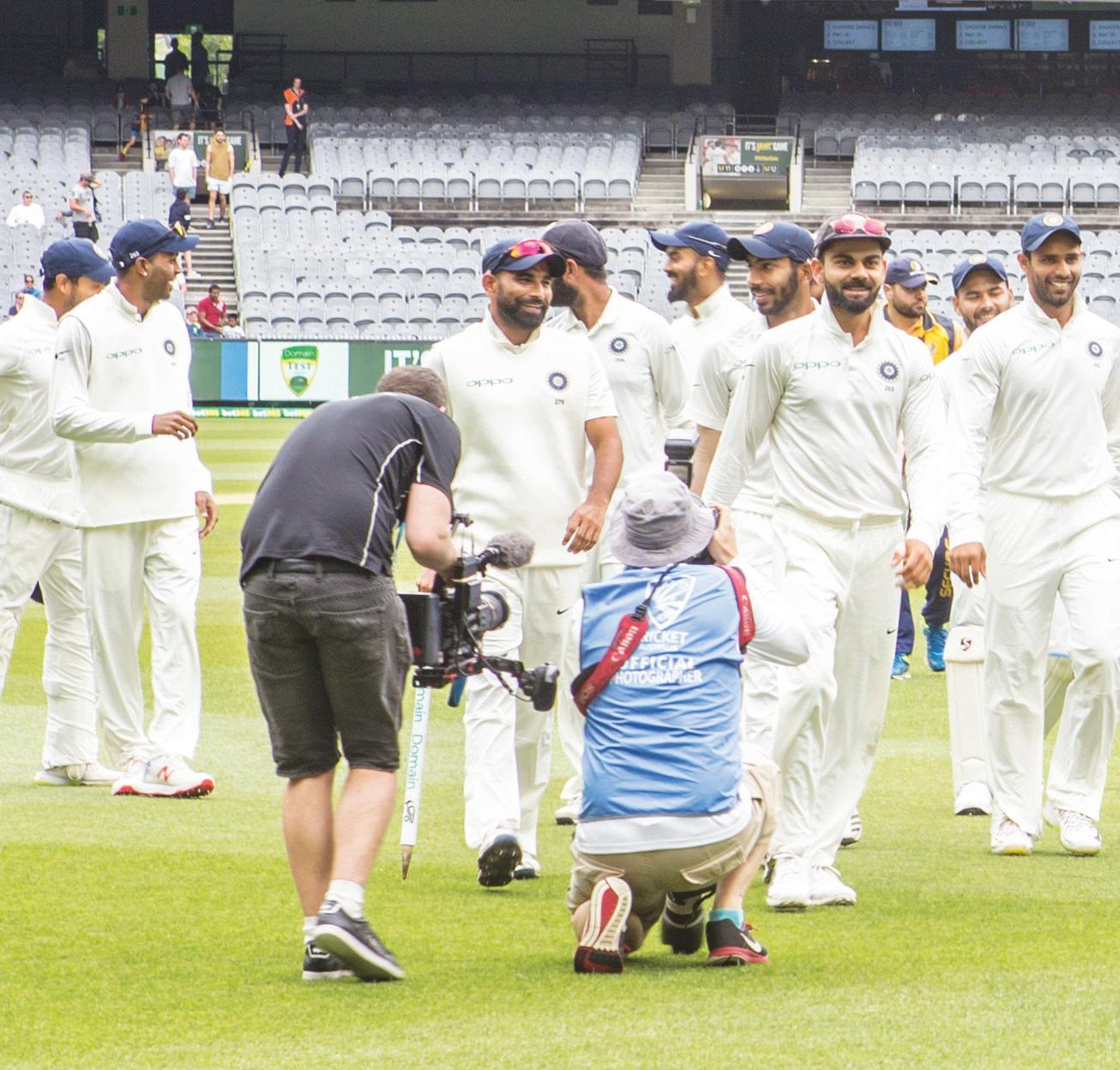 BY RITAM MITRA
BY RITAM MITRA

India’s journey to win its first Test series on Australian soil began 12 months ago, when Kohli’s team lost 2-1 against a South African side featuring the now-retired AB de Villiers and Morne Morkel. The tourists’ only victory came in the dead rubber in Johannesburg, albeit on the most difficult of the three pitches served up to the visitors. In that win, both Mohammad Shami and Jasprit
Bumrah took 5-wicket hauls. It was the first sign that India’s exciting crop of fast bowlers were finally up to the challenge of bowling India to victories in foreign conditions, even where their batsmen failed to provide any advantage.
Fast forward 12 months, and India fields teams in Melbourne and Sydney that retain only 5 or 6 players from its successful Johannesburg XI. In years gone by - and indeed for most teams today - that would be a sign of chaos, of instability. Yet for this Indian side, it means one thing: depth. And more so than the indefatigable Pujara, the explosive Bumrah or mastermind Kohli, depth is what eventually wins India their first series in Oz.
It was a lack of depth, conversely, that ended Australia’s ambitions of defending history, but the scale of the problem was not clear until the fat lady had sung and Kohli was lifting the trophy. Even when it was announced after the Cape Town ball-tampering scandal that Australia would be without Steve Smith and David Warner for the home summer, it was not seen as a completely fatal blow. After all, Australia as a team have never been reliant on one or two players; Australia is the land of a first-class competition that has been the envy of the world, an endless treasure chest of fast bowlers and aggressive batsmen who thrive on flat and hard pitches. This is the country where a player as good as Matthew Hayden had to spend several seasons averaging above 50 in the strongest-ever Australian domestic cricket competition before being given an extended run in the national side.
And in the first two matches of this series, it seemed as though that vision would hold true. On the very first day in Adelaide, the Indian top order was dismantled, as the tourists slumped to 5/86 shortly after lunch,
then limped to 250 courtesy of a lone hand by Pujara. Then, even as stalwarts like Khawaja and Marsh failed to deliver in the hosts’ first innings, new blood in Travis Head, Peter Handscomb and Marcus Harris all contributed to bring Australia within touching distance of India. Australia ran close in the end, but lost by 31 runs on a pitch that was always widely regarded to be India’s best chance at winning a match.
In Perth, normal Australian service seemed to have resumed as the Indian batsmen twice succumbed to relentless pressure on a diabolical but excellent pitch. It was not the usual Australian blueprint of success, but it was effective. In fact, without Kohli’s sublime first innings century, the margin may have been humiliating for India, as have been many of its losses in Australia.
But it is funny how long a few weeks can be in cricket; that lofty image of Australian cricket now seems like a distant mirage in the rearview mirror.
In Melbourne, reeling from the ignominy of the loss in Perth, India replace both their
failing openers. It is an almost unheard-of decision in the middle of a tour like this, especially with the series tied 1-1. The local papers report that the Indians are panicking, but the panic button works; debutant Mayank Agarwal is the most assured of all the Indian batsmen, posting a fluent 76 in the first innings, and 42 in the second innings as the rest of the team collapsed around him. The promoted Hanuma Vihari blunts the new ball effectively, scoring 8 off 66 in an innings that Kohli praises as equally important as Pujara’s marathon century. The other replacement, Jadeja, takes 5 wickets from 57 tight overs on an unresponsive pitch as India retain the Border-Gavaskar Trophy.
India rubs salt in the wounds in Sydney as the hosts crumble, their bowlers now on their knees. Again, Agarwal and Vihari impress, and Pujara continues Pujara-ing. Rishabh Pant (159*) slams the highest-ever score by a visiting wicketkeeper at the SCG, in the company of Ravindra Jadeja who scores a blistering 81. Then Rohit Sharma’s replacement, Kuldeep Yadav, takes 5-99, the hosts capitulating
and following-on before the Sydney weather invokes the mercy rule.
Even still, some have questioned whether an Indian side without Pujara and Kohli would beat Australia.
The answer is that, in home conditions, India could actually lose most of its top 6 batsmen, including Pujara and Kohli, and still comfortably beat an Australian side with Warner and Smith. With batsmen such as Karun Nair, Prithvi Shaw, Shreyas Iyer and Shubman Gill waiting in the wings, along with the more experienced hands who did not feature in the most recent Tests such as Rohit Sharma, KL Rahul and Murali Vijay, India’s batting riches know few bounds. Even the loss of one of its all-time great spinners in Ravi Ashwin did not hurt India’s cause, as Yadav and Jadeja proved. All of these players could walk into the Australian XI today.
The upshot of it all? There is no doubt that India’s series win is historic, but it is also an unqualified one; there will be no asterisk next to this achievement, as much as some may desire it.
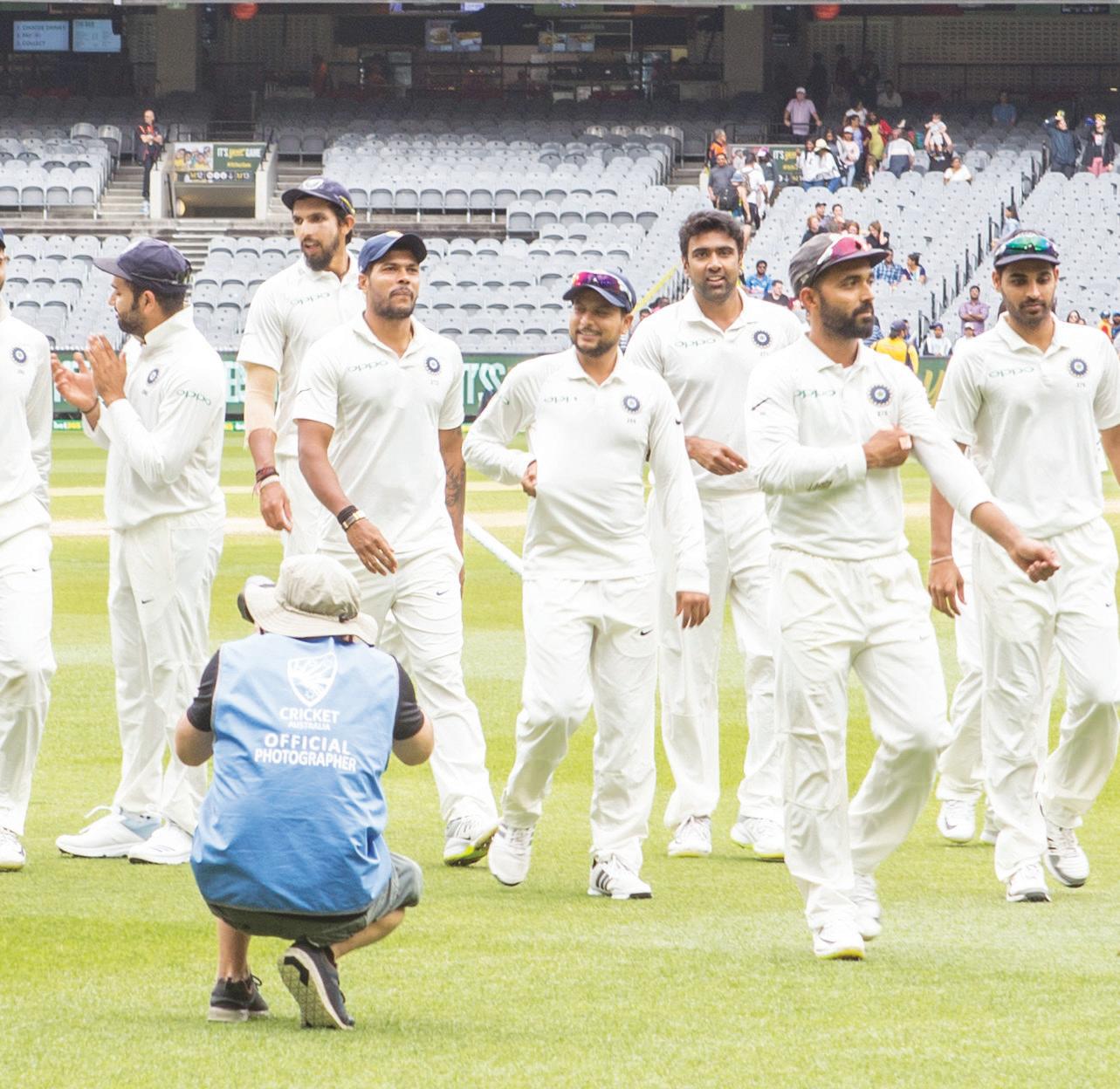
No visiting cricketer - and possibly no athlete - has ever toured Australia with as many arrows trained on his back as Virat Kohli. Whether it is the niggly opposition, the provocative Australian media, or the hostile local fans at the ground and on social media, everyone wants their pound of flesh. For his part, Kohli has doubled down, perfectly at ease with his role as pantomime villain for as long as the results keep permitting it. Off the field and away from the spotlight, however, Kohli’s relaxed demeanour belies the hungry fire that rages within.
Troubled by a back injury throughout India’s victory in the Boxing Day Test - a victory that ultimately proved pivotal in ensuring India’s historic 2-1 series win, given the inclement weather in Sydney - the Indian captain spent much of his free time at the team hotel under the watchful eyes of team physio Patrick Farhart and strength and conditioning coach Basu Shanker. Each morning and evening, Kohli’s relaxation came in the form of rehabilitation exercises in the hotel pool and spa, offering those around him a fascinating insight into his off-field persona.
Despite being by some distance the most worshipped cricketer in the world - a title that, admittedly, is all but promised to an Indian player - it is obvious to even the casual observer that Kohli does not walk as a Colossus, detached from reality as one might expect of someone with over 28 million Instagram followers. The laugh of a child playing in the pool, the fleeting moment of agony upon dipping into a 40 degree spa, the serene Melbourne sunset; each brings a smile to his face, as it would to the rest of us. Even as Farhart sits by the pool, engrossed by his phone, Kohli calls out to him, “It’s a beautiful pool, no?”
Yet even in the peaceful ambience of a secluded and near-empty rooftop pool overlooking the Melbourne skyline, there is one thought firmly at the forefront of Kohli’s mind: the battle at hand. And like any fan, Kohli loves to talk cricket, no matter when and
with whom. As much as Kohli asserts that he does not read the news media or otherwise indulge in the court of public opinion, it is difficult to believe, given the extent to which he lives and breathes the game.
“Did you hear Ravi Shastri’s comments back to Kerry O’Keeffe the other night?” he says to me, then proceeding to recount in detail Shastri’s on-air riposte to O’Keeffe’s commentary likening a Ranji Trophy bowling attack to “canteen staff”.
Kohli then turns the conversation to the declining strength of Australian shield cricket, with more than a hint of indignation and disbelief in his voice that it was the quality of India’s domestic circuit that was being questioned. It is no secret that O’Keeffe’s remarks lit a fire under the Indian camp; bowling coach Bharat Arun later labelled the comments “offensive” and admitted they “hurt”, while Kohli made it a point to lavish praise on the Indian first-class set-up in his post-match interviews following the team’s win in Melbourne. Ironically, much of the home team’s post-series dissection has hinged on how to overcome perhaps Australia’s worstever Sheffield Shield stocks.
You could sense that Kohli was in his element now. He spoke of an ex-Australian player who had been seeking an interview with him during the Test series, a request that Kohli declined until at least after the conclusion of the series. According to Kohli, this did not sit well with that player. “Only when they want something, they [certain ex-players] will speak to you a certain way,” he says. “But it doesn’t matter to me if I’m talking to you or someone who has 15,000 runs, at the end of the day it’s a human interaction. I’m not going to go above and beyond just because you have 15,000 runs. They don’t see it that way, but I do.”
Kohli’s self-reflection continued, but it was candid, rather than contrived. “To be honest, I don’t care what people have to say,” he says. “I don’t have to hold up a banner and say, ‘This is me’. There’s always someone up there watching and judging,” he concludes, gesturing to the skies above.

On each of his visits to the pool, Kohli entertains conversations with anyone who approaches him, even as the hotelier and team minder watch on closely, ready to intervene should it become necessary. He is polite, respectful and his smile and eye contact do not waver. He also listens with the kind of intense attention with which he regards a ball hurled at him across 22 yards.

Kohli’s generosity goes beyond conversation; in the euphoria following the Indian team’s win at the MCG, he pauses to give away a set of signed pads to a delighted young Indian fan. Even in the denouement of what he crowned the biggest achievement of his already illustrious career - hoisting the Border-Gavaskar trophy to celebrate winning a series on Australian soil for the first time - Kohli stepped aside almost immediately, handed the trophy to India’s most inexperienced player, Mayank Agarwal, and did not once seek to take centre stage.
This gesture, more than perhaps any other, proved this much: this Indian captain is every bit as invested in his team as they are in him. As long as that equilibrium is maintained, the inferno within Kohli will burn for years to come. It can be no surprise that Kohli has referred to the series win merely as a “stepping stone” to greater heights ahead.
After dressing, and before leaving the pool, Kohli comes by to say goodbye. At the end of such an exceedingly normal interaction, for just a moment it was easy to forget that you had been in the presence of royalty.
He is polite, respectful and his smile and eye contact do not waver. He also listens with the kind of intense attention with which he regards a ball hurled at him across 22 yards.Ritam shares a rare selfie
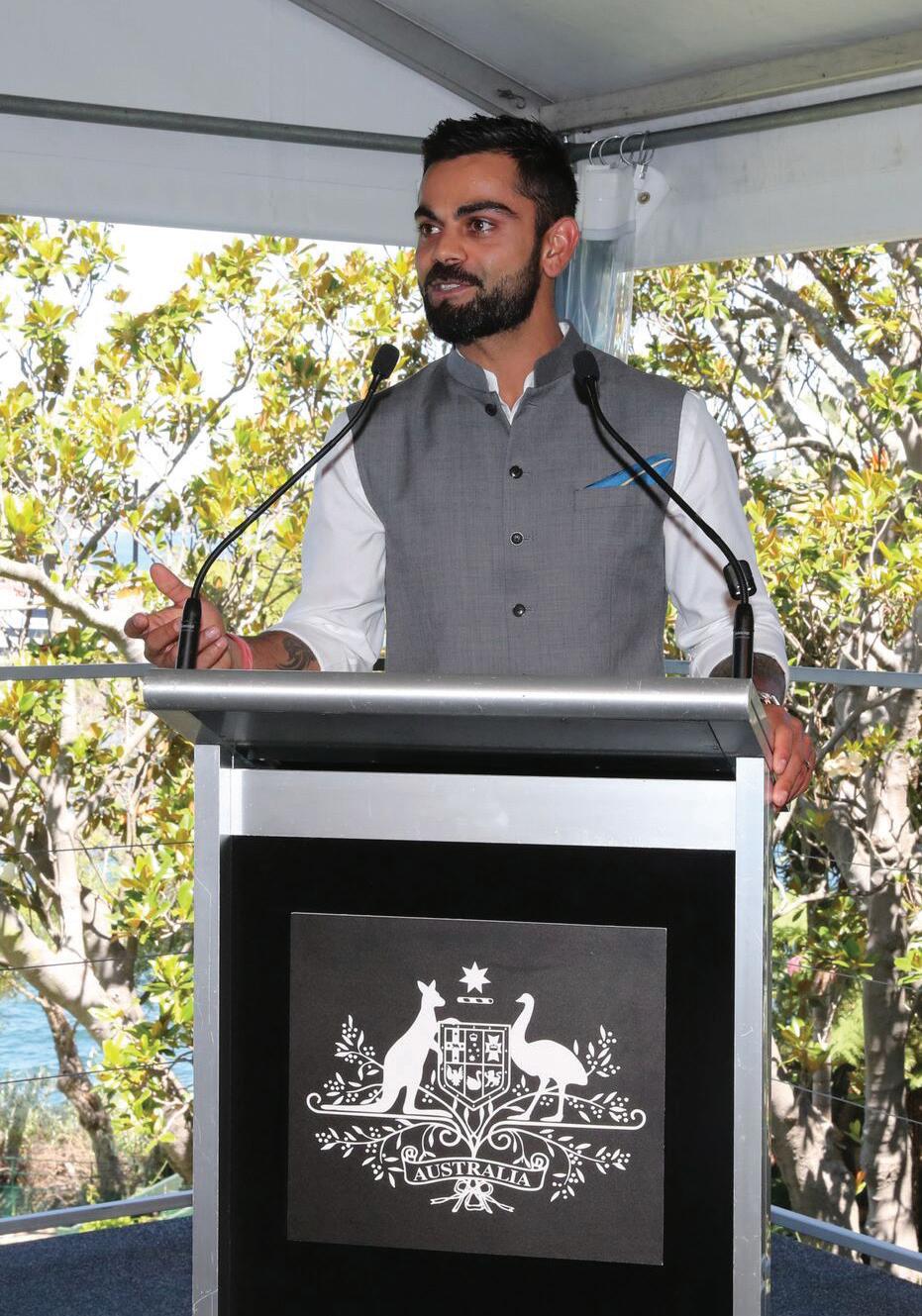
Rubbing salt in it: Cape Town wounds live on
A former Australian coach and a respected commentator were overheard discussing Cameron Bancroft and Steve Smith’s controversial decisions to give further interviews about their involvements in the Cape Town ball-tampering scandal. The interviews were aired during the first day of the Boxing Day Test and were an unwanted distraction on the biggest day in the Australian cricket calendar.
During lunch on Day 4 at the SCG Test, the commentator was heard to say to the ex-coach, “Can you believe those two?
Mind-numbingly stupid.”, while the ex-coach replied, shaking his head, “Mate, no idea”. There may have been some more colourful language used, but this much was clear: the entire Australian cricket fraternity is astounded at the interviews, and the wounds from the events in Cape Town 10 months ago still remain well and truly open.
The exchange between the pair also proved that the Indian bowlers have left a serious impression on the hosts, with one of the pair remarking “They’re getting so much out of the pitches, they’ve been much better than our lot”.
Is it still banter?
Aakash Chopra has never been the most
popular of commentators. Unflinchingly parochial and at times almost argumentative, Chopra’s style has not washed too well with local audiences or his fellow commentators during his time with Channel 7, with the exIndian Test opener regularly clashing with the likes of Michael Slater and Damien Fleming on air (although admittedly it does not take much to get under Slater’s skin).
The banter spilled into the lunch room during the SCG Test, when Fleming walked past Chopra and said “Do you ever stop talking mate?” He then gestured to Chopra and said, “He never shuts up!” Chopra retorted with “I’m paid to give my opinion”. We’re sure it was all in good humour, but there was certainly a little bit of bite in this banter.
As an aside, we think James Brayshaw missed the mark with his on-air comments that Chopra must not know where his wages were coming from, given Chopra’s notoriously pro-India stance. After all, while an Australian broadcaster may be paying Chopra’s wages, India is the reason cricket has any money at all.

Mitchell Johnson was a fearsome fast bowler in his prime, but for much of his career, he was pilloried for his wayward bowling.
Things have not changed much in
Johnson’s retirement, with the former Australian quick struggling to make his mark in the world of cricket journalism. Penning a piece for Fox Sports Australia, Johnson heavily criticised Virat Kohli, arguing in his very first line that the Indian captain did not make eye contact with Tim Paine when shaking hands after the second Test match in Perth. The claim was demonstrably false – a simple review of the video made it clear that Kohli had in fact made eye contact.


In a private exchange on Instagram, Johnson first denied his mistake, stating “That’s your opinion, your Indian captain is childish”, before apparently reviewing the video and commenting “Okay maybe there was or wasn’t eye contact but I am still entitled to me [sic] view and opinion”.
Johnson’s recent run of social media warfare even led one current Indian player to remark in confidence, “Mitch has lost it”. We don’t think so, but we think Mitch is definitely still hurting after the “childish” Kohli hit Johnson to all corners of the MCG in 2014.
Yadav’s new toy
Fresh from taking 5 wickets in his first Test on Australian soil, Kuldeep Yadav had earned a hard-fought break when rain intervened on Day 4 of the SCG Test match.
Yet even the darkening Sydney skies could
not keep the young spinner off the SCG soil, with Yadav spotted having a grand play with Fox Cricket’s “rover” vehicle as if it were Christmas morning, while his teammates relaxed in the dressing room away from the cold, the rain, and the hordes of Indian fans crowding the front of the away dressing rooms in the Members Pavilion. Yadav’s smile was a dead giveaway for his friends and family: his next birthday present simply has to be a high-powered remote-controlled vehicle. Although Yadav was not required with the bat in his only appearance in the series, he still managed to hit a four – by driving the rover straight into the boundary rope. Oops.
Kasper the Friendly Bowler
Former Aussie player Michael Kasprowicz claims quite proudly that he has contributed significantly to India’s GDH – ‘Gross Domestic Happiness’. Talking at a sideline event during the Border Gavaskar Trophy, he explained that TV snippets of Sachin Tendulkar smashing him relentlessly to the boundaries continue to this day to give India much cause for happiness.
Vegan Virat
So you think Virat was less pugnacious this time around? Word has it that wifey Anushka must take credit - she’s converted him to a vegan, apparently. And Virat himself is all
for this new love for ‘clean living’, claiming it helps him recover faster on game days.
Pakistan’s hand in India’s win Sanjiv Dubey, a Level 3 coach and founder of the Western Sydney based cricket academy Sports Foundation Australia, has been doing his bit for the visiting Indian cricket team, helping at practice sessions. Last month he had organised for four of his wards - high school kids and up and comers in NSW’s pathway program - to test their mettle against India’s greats. This month, he did the same with some Pakistani players he is currently training. Harris Rauf, Salman Irshad and Abbas Baloch, players from Pakistan Super League’s Lahore Qalander team, bowled to Indian batsmen at the nets at SCG. Top-level teams like to practice with what they might expect on match day, and so Harris and Salman - who bowl consistently above 145 kms per hour – were no doubt very welcome at the nets. To emulate Mitchell Starc, Sanjiv chose left-arm fast bowler Abbas Baloch.
Fundraisers galore
The bidding on McGrath Foundation’s Pink Test items continues as we go to press. Virat Kohli’s pink baggy has attracted the highest bids by far of all the items donated by the players, at just under $4000. Looks like there are many fans out there who want to own a bit of cricketing history. Nathan Lyon comes in next at the $2000 mark, followed by Pat Cummins, Peter Handscomb and Rishabh Pant.

Meanwhile, the Chappell Foundation has also been the recipient of a Kohli gift – a set of his pink gloves and a shirt, both autographed, made personally to Greg Chappell (GC). Will raise a
tidy sum at their forthcoming charity annual dinner on 20 March, you can be sure.
Both Ravi Shastri and Virat Kohli were seen raptly listening to GC when he dropped by to say hello to them, on their Dressing Room balcony. GC was actually there to visit former cricketers of Sydney’s Indo Australian Cricket Club (IACC) who were having an annual reunion in the Members stand, five rows away from the Indian Dressing Room.


Iconic Indian Broadcaster Harsha Bhogle also did his bit for the Chappell Foundation. In Melbourne, on Boxing Day, despite his hectic schedule, Harsha fronted up for an event hosted by the Swami Army which will be donating a tidy sum of money to help The Chappell Foundation ameliorate youth homelessness in Australia. Harsha was mobbed by the 100-odd Indians who attended the event and patiently interacted with them for a couple of hours. A true rock-star!
A selectors’ soiree
Talking of GC, he was seen deep in conversation with MSK Prasad, his India counterpart (ie chief selector for the Indian cricket team). Were they sharing trade secrets, tips maybe? Appears GC was passing on a bit of gyan – not about cricket, but about the Three Sisters at the Blue Mountains. And MSK came away fascinated that the stone siblings had Indian-sounding names: Meehni, Wimlah and Gunnedoo. Later, MSK confirmed that sporting facial hair does not give cricketers bonus points for selection to the team. (If you’re an old-timer, you might recall MSK’s last visit to Oz in 1999: he opened the batting in Sydney alongside VVS Laxman).
Looks like Kohli’s love for his youngest fans is going to see many more of them flock to the grounds.
Both at the MCG and the SCG, Kohli went out of his way to give a gift to his littlest fans. In Sydney, six-year-old Atharv Nautiyal is now the proud owner of a batting pad that once belonged to his idol, the captain of the Indian cricket team. A budding cricketer himself who plays - and quite skilfully if reports are to be believed - for the Carlingford Waratah Club, he has been a long-time Kohli fan. The Nautiyal family were in their seats close to the dressing room. “Rain had stopped play and we saw Kohli walk out with a friend,” dad Anuj recounts. “He saw us and smiled and waved to Atharv. Then he went back in. We were thrilled to bits, but imagine our surprise when he came out a few minutes later with a batting pad in his hand. Atharv was a little distance away with my wife Monika by then, so he asked his colleague to walk round and hand the gift over. Virat then blew him a kiss, waved and walked back.”


It’s a great moment for the Nautiyal family and they are still on cloud nine, to use Anuj’s words. “Atharv has been telling everyone he was on TV, and rang his grandparents back in India to tell them – literally shouting into the phone!”
The Nautiyals have been having the discussion recently about whether to expose their little one to more sport, since he has a talent, or stick to academics at which he also excels, bringing home great reports from
school. Hmm, wonder what Virat would say…
They are quite decided about the treasured batting pad, though: it’s going to be encased in a solid frame and take pride of place on the formal room wall.
Here’s hoping this little routine of Virat’s with the little bachchas, is a regular occurrence.
A little party never killed nobody
The stewards in the Members area at the SCG have come in for strong criticism due to their lack of good sense. They are there to make sure the players sitting in their dressing rooms are not disturbed, but it seems that after the wash-out for most of Day 4 and seemingly ongoing for Day 5, the players were more than keen to sign autographs and take selfies with their gathered fans. The stewards thought otherwise and their rude behaviour towards fans and some of the players was noticed by those gathered there.
But no one could have stopped the celebrations – not even the stewards. The warm welcome given by the Bharat Army to the winning team at their hotel lobby has probably now been seen a million times. There’s an interesting tidbit there, revealed by Rajul Sharma, the Bharat Army’s Australia Country Head, to broadcaster Ekta Sharma on Indian Link Radio. “A similar reception had been organised by the Bharat Army in Melbourne, following the MCG win. Captain Virat Kohli was warm and gracious, but had refused to dance with us then. I’m holding on for Sydney, he had said with determination –I’ll dance with you at Sydney.”
KOHLI’S BAGGY PINK IS AN AUCTIONER’S DELIGHT
1 New Year’s Day
13 Lohri
14 Makar Sankranti
15 Pongal 26 Republic Day
*26 Australia Day
*28 Australia Day holiday
6 May Day (QLD, NT)
12 Mother’s Day
18 Buddh Purnima 27 Reconciliation Day (ACT)
10 Basant Panchami
14 Valentine’s Day
3 Western Australia Day (WA)
5 Id Ul Fitr
10 Queen’s Birthday (all states except QLD and WA)
1 Father’s Day
2 Ganesh Chaturthi
10 Muharram
11 Onam 30 Queen’s Birthday (WA)
2 Gandhi Jayanti
6 Dussehra Maha Saptami
7 Queen’s Birthday (QLD)
7 Labour Day (ACT, NSW, SA)
7 Dussehra Maha Ashtami
8 Dussehra Maha Navmi
17 Karwa Chauth
27 Diwali
29 Bhai Duj
Republic Day celebration
Sat 26 Jan (9.00am – 10.30am)
On the occasion of the 70th Republic Day of India, members of the Indian community are invited for a program that includes flag hoisting ceremony, singing of the national anthem, reading of the speech of the Hon’ble President of India by Consul General and cultural performances. At Consulate General of India, Level 2 265, Castlereagh street Sydney. Details 02 9223 2702.
Kite flying
Sun 13 Jan (9.00am – 6.00pm)
Head to the kite flying festival at Holroyd Gardens to fly kites, enjoy traditional Indian street food and drinks. Plus a live DJ and other fun activities like henna stall, face painting and a jumping castle. At Pitt St & Walpole St, Merrylands. Details 0411 630 109.
Kite flying
Sun 13 Jan (9.00am – 7.00pm)
Celebrate the biggest kite flying festival of 2019 with unlimited entertainment, food and fun. At Castle Hill Show, Castle Hill Showground, Castle Hill. Details 0430 044 255.
Gandhi memorial ceremony
Wed 6 Feb (5.30- 7.30pm) Annual Gandhi Memorial Ceremony to commemorate India’s Martyrs Day, the anniversary of Mahatma Gandhi’s assassination on 30 January 1948. Followed by the Gandhi Oration at UNSW Sydney. At UNSW Sydney, Gate 11, Botany Street, Library Lawn. Details 02 9385 1515.
Gandhi Oration: Tim Costello
Wed 6 Feb (6.30pm – 7.30pm)
Delivering this year's Gandhi Oration is Chief Advocate of World Vision Australia Tim Costello on ‘How Australians make the world a better and fairer place’. The Oration is delivered by person making a significant contribution to major human rights issues of our time. At The Roundhouse, UNSW Sydney, Kensington. Details 02 9385 7630.
Holifest
Sun 3 Mar (11.00am – 4.00pm)
Playing with colours, and enjoy live stage performances, food, children’s fun rides and lots of entertainment. No outside colours allowed. At Castle Hill Showground, Castle Hill. Details 1300 338 368.
Bangla Utshob
Sat 19 Jan (12.30pm) Bangla Utshob Association Incorporated presents Bangla Utshob in Sydney. At Belmore Sports Ground 3 Edison Lane, Belmore NSW, Newcastle. Details 0416 784 471.
Leprosy Mission Trust of India
Sun 20 Jan Dr Famkima Darlong of The Leprosy Mission Trust India talks about healing and hope to people
affected by leprosy.
8:30 am service at North Mackay
Presbyterian Church, Cnr Evans Ave & Harvey St, North Mackay.
10:30 am service at Sarina
Presbyterian Church
Lot 75 Sarina Beach Rd, Sarina.
6:00 pm service at Mackay
Pentecostal Fellowship, 2 Palmer St, North Mackay.
Details 1800 537 767.
Indian Bridal Expo
Sun 3 Feb (10.00am – 2.00pm)
The Indian Bridal Expo is an event to assist couples with all their wedding needs. At Liverpool Catholic Club, 458 Hoxton Park Road, Prestons. Details 0431 005 869.
Bangla Art Exhibition
Sat Feb 9 (6.00pm – 8.00pm)
Performing Arts-Bangla Art Exhibition. Music, dance, poetry recitation and more. At Bankstown Art Centre, 5 Olympic Parade, Bankstown. Details 02 9707 5400.
Indian Jungle Dance Safari
Mon 14 Jan (10.30am) Through story-telling, fun facts and firsthand experience, Shyamla Eswaran teaches students how to move and act like Indian animals in the wild. The workshop encourages self-expression and teaches children the importance of maintaining the natural habitats of these wild creatures. At Concord Library, City of Canada Bay Libraries, 60 Flavelle st, Concord. Details 9911 348.
SCG Bay of Tendulkar
Sat 12 Jan (1.00pm – 10.00pm)
Claim your FREE Tendulkar wig and cut-out by joining us in the Bay of Tendulkar this summer. To unlock the secret password to access the Bay of Tendulkar tickets from Ticketek, just email us at myindigocrew@gmail.com or send us a Facebook message with your email address. At Sydney Cricket Ground (SCG), Driver Ave, Moore Park, Paddington. For details email myindigocrew@gmail.com.
Chinmaya Health Challenge
Sun Feb 17 (9.30am – 12.30pm)
Join Swamiji and the Chinmaya family in the health challenge to uplift ourselves, challenge, inspire, and bring us together while raising funds for those who don't share our privileges. At Castle Hill Showground, Castle Hill. Details 02 8850 7400.
STAGE
Qissebaazi
Fri 1 Feb (7.00pm onwards) to Sat 9 Feb (9.00pm)
Nautanki Theatre Company presents Qissebaazi, a playful telling of stories. At T1 Theatre, Building Y3A, Macquarie University, 10 Hadenfeld Ave, Macquarie Park. Details 0432 832 311.
2toTango3toJive
Sat 16 Feb (6.00pm) Noted
Bollywood artist Saurabh Shukla presents a Hinglish play starring Shukla with Bollywood actors
Achint Kaur, Sadiya Siddiqui and Preeti Mamgain. At Sir John Clancy Auditorium, 9 High St, Kensington. Details 02 9385 1515.
Sri Purandara Dasa Aradhana
Sun 17 Feb (9.15am – 2.00pm)
A program Sri Purandara Dasa Aradhana, that includes arathi and prasadam along with a prayer meet. At Ermington Community Hall, 8 River Road, Ermington.
Details 0426 866 135.
SYDNEY FESTIVAL
Mallakhamb at Sydney Festival
Till Sat 13 Jan The ancient Indian sport of Mallakhamb is given new life by five astoundingly talented physical artists. Combining gymnastics, wrestling and aerial yoga, these extraordinary artists eloquently perform feats of strength, poise and dexterity in a physical spectacle that borders on the impossible. At Prince Alfred Sq, Parramatta. Details 1300 856 876 or visit www.sydneyfestival. org.au
Shubha Mudgal and Aneesh
Pradhan
Sat 12 Jan (8.00pm) Revered
Hindustani singer Shubha Mudgal, jazz saxophonist Sandy Evans, tabla maestro Aneesh Pradhan and his disciple Bobby Singh, and classical harmonium player Sudhir Nayak come together for a spectacular performance at Sydney Festival this year. At City Recital Hall, 2–12 Angel Place, Sydney. Details 1300 856 876 or visit www.sydneyfestival.org.au
Counting and Cracking
11 Jan – 2 Feb In this Tamil tale from Sydney, sixteen actors play four generations of a family in a story about Australia as a land of refuge; Sri Lanka’s efforts to remain united; and reconciliation within families, across countries, across generations. An epic story of love and political strife, of home and exile, of parents and children written by S. Shaktidharan, this powerful new play - in its world premiere - is served with a communal meal. Details 1300 856 876 or visit www.sydneyfestival.org.au
Sant Nirankari Mission Sydney
Weekly congregations held every Sunday 5:30pm to 7:30pm followed by community meals. Venue: Sant Nirankari Bhawan, 166 Glendenning Road, Glendenning. Details Devinder 0403 216 084.
Free Yoga with Divine Life Society
Tuesdays 7pm Swami
Uditramanandaji of The Divine Life Society of Australia offers free Yoga classes every Tuesday from 7.00pm8.15pm at Strathfield Girls High School. All levels of fitness welcomed. Entrance via Oxford Rd. Details Karo 0413 535 157.
Lunch-time Meditation session
Thu 17 Jan (12.15pm – 1.00pm) Sit
back, relax and be guided through a mind-body relaxation. Leave feeling fantastic, with an increased sense of wellbeing and a positive and peaceful state of mind. At Indian Cultural Centre, Level 2, 265 Castlereagh Street. Details 02 9223 2702.
Bollyfusion Dance Workshop
Sun 13 Jan (3.00pm – 5.00pm)
Dance into the new year Bollyfusionstyle with this 2-hour workshop featuring Tamil Kuthu from South India and a medley of Bollywood classics. At Electric DNA (Dance N' Arts), 394 Marrickville Road, #6, Marrickville. Details 0415 633 531.
Dard-e-Disco
Sat 9 Feb (6.00pm)
Dard-e-disco with Mueen and Avikalp. At Roma Function Centre, 167 Northumberland St. Liverpool. Details 0434 511 779.
Sridevi: A tribute
Sun 24 Feb (2.00pm onwards)
Adrian’s Orchestra presents Sridevi Tribute ‘Remembering Roop Ki Rani’, live concert, one show only. At Bowman Hall, 35 Campbell Street, Blacktown. Details 0452 398 299.
Unity Bollywood Concert 2019
Sat 2 March (7.00pm onwards)
This event returns with another impressive line-up of performers including live music by Sydney's premier band, Saaz Band Sydney. At The Diamond Showroom, Blacktown Workers Club, 55 Campbell St, Blacktown. Details 0412 779 418.
Sahir Kee Yaden
Fri 22 Feb (7.00pm – 11.00pm)
A musical journey of Sahir Ludhianvi. Singers Lalit Bunty Bhatia and Shobha Ingleshwar. At Parra Villa Function Lounge, 42 Campbell St, Parramatta. Details 0412 071 277.
Bollywood Valentine Night
Thu 14 Feb (10.00pm – 2.00am)
Nonstop music with live DJs DJ Ash and DJ Brix, drinks, dancing and more. At Blackbird Cafe - Cockle Bay Wharf, Balcony Level, Cockle Bay Wharf/ Harbour St. Details 0470 315 203.
Masquerade Love night
Sat 16 Feb (7.00pm onwards)
Choose your most exquisite masks, dress in your finest and dance the night away with your loved one. At The Godfather function centre, Harris Park Parramatta. Details 0423 588 428.
Bollywood Bounce
Fri 11 Jan (10.00pm – 3.00am)
Come and party in style with the most fashionable crowd in Sydney. At Blackbird Café, Cockle Bay Wharf, Balcony Level, Cockle Bay Wharf/ Harbour St. Details 0470 315 203.
To add your event email media@indianlink.com.au
JANUARY (1) 2019 www.indianlink.com.au



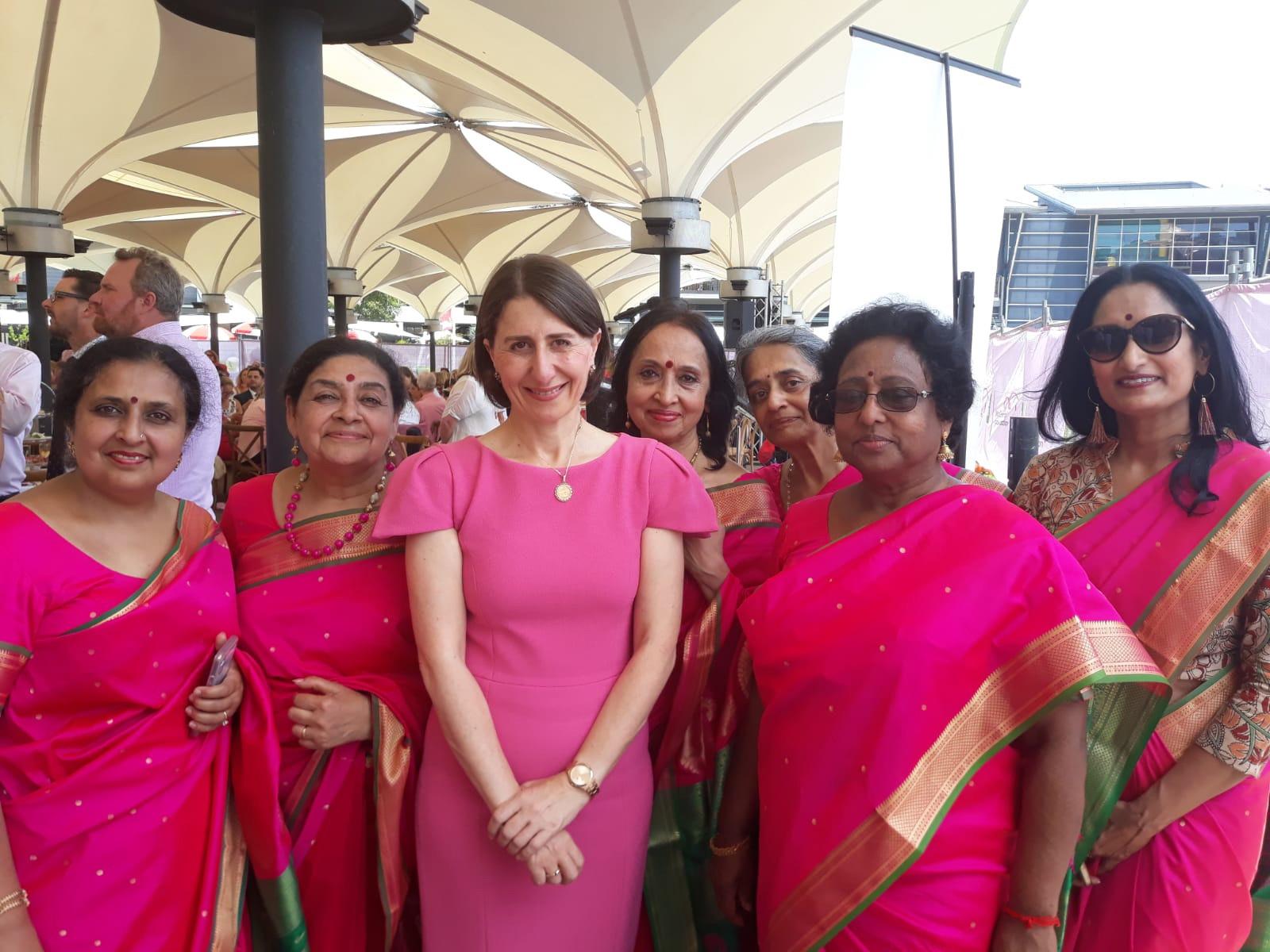
Saturday 5 January was a suffocatingly hot day in the emerald city, but despite the mercury creeping up to almost 40°, die hard ‘crickets’ swarmed the SCG for a piece of action as India and Australia battled out the final test match of the 2018-19 series. The tensions were high and the heat would have been insufferable had a wave of pink not washed over to provide refreshing relief. The 120 ladies donning pink saris to promote the Pink Sari Inc’s message of early detection of breast cancer were a sight to behold on the third day of the match. It is hardly surprising then that they proved to be the biggest highlight of the game that day. The colourful saris, music and dances created an atmosphere that drew
everyone in and made the day memorable.
Indian Link sought out Shanta Viswanathan, a voluntary committee member of Pink Sari Incorporated to get the lowdown on the stunt. Shanta explained that it all came together in a very short time.
“Pink Sari has always used arts as a platform for promotion, like the popular ‘Portraits in Pink’, ‘Pink Sari Melodies’ and dance performances at Parramasala, but sport was something we hadn’t considered yet,” Shanta enthused. “Since we all love cricket we thought it would be an excellent opportunity to get our message across to thousands via television, print media and word of mouth. And the response we received was overwhelming.”
“The ball started rolling as Cricket Australia came on board and we received a call from the McGrath Foundation which has been promoting aftercare in the form of breast care nurses with their Pink Test initiative for the past 11 years,” Shanta informed. “We were thrilled to be working alongside them. Our community was absolutely fantastic in its unwavering support and social media played its part in galvanising the ladies. The Pink Sari team braved the scorching heat to come clad in their signature saris along with some men who donned pink turbans in support. A few Bollywood numbers were executed to start off the performance which were followed by classical dances by performers from the Ruchi Sanghi
Dance Company. Pink Sari ambassador Kalyani Mani shared her inspiring story and a beautiful Rajasthani performance was put up for the Jane McGrath high tea.
Pink Sari started out in 2014 as a breast cancer awareness campaign targeting Indian and Sri Lankan communities. The alarming statistics pointing out that the rate of breast screening amongst the two communities was one of the lowest in the state, prompted the Cancer Institute NSW to fund the Pink Sari Project. The program was initially run by NSW Multicultural Health Communication Services and NSW Refugee Health Service with support from UTS and Breast Screen NSW. Working closely with Indian and Sri Lankan community organisations, the project
started out with a modest aim of increasing breast screening in these communities by 5% in the two years that it was funded for. However, the results achieved by Pink Sari Project were phenomenal. The screening rate shot up to 17% in the first two years. When the funding ceased in 2016 the program was formally handed over to the women who had been actively involved in it. Pink Sari Incorporated is now a community-owned, notfor-profit association run by a dedicated team of six volunteers. According to the figures released by Cancer Institute NSW for 2017, the rate of screening through Breast Screen NSW by women speaking Indian languages has increased by another 14%.
Shanta explained that in the absence of
funding, the association works strategically to raise awareness by utilizing the resources available. “We conduct information sessions in partnership with other organisations and are always on the lookout for innovative and creative avenues to promote the Pink Sari message of early detection and the importance of screening amongst women in the target age group of 50-74.”
“Having achieved such success with breast cancer,” Shanta revealed, “in 2019 the association is planning to broaden the scope by including awareness of bowel cancer to Pink Sari. The program will focus on both men and women as the rate of screening in the community remains very low for this cancer.”




Pink Sari is working with the Cancer Institute to launch the bowel cancer initiative in March. It is already being promoted in community groups like AHIA and RAINS with information sessions lined up for February. Shanta explained that the association will be liaising with GPs to promote and encourage bowel cancer screening amongst the Indian/ Sri Lankan communities. The association will also be conducting pre and post bowel screening workshop evaluation surveys to get a better idea of the knowledge of the community before and after attending the workshop and how likely they were to get screened after attending.
Shanta assured that breast cancer


awareness will not take a back seat with the launch of Pink Sari’s new bowel cancer awareness campaign. Instead the two initiatives will run side by side for greater community benefit. She concluded that the vital message of both programs is to make the Indian/ Sri Lankan community understand the importance of early detection. Breast screening mammograms and bowel cancer screening tests take only a few minutes. Ring Breast Screen NSW on 132050 to book an appointment and speak to your GP for bowel cancer screening.
To volunteer, support or be involved with Pink Sari Incorporated like their Facebook page to receive news, updates and posts regarding their activities.
The screening rate for breast cancer in the Indian and Sri Lankan communities shot up to 17% in the first two years since Pink Sari was launched in 2014, and in 2017, went up by another 14%
Cricket fans that had their eyes peeled on the hallowed grounds of the G during the recent test match series, would have caught a glimpse of the colourful turban, neon bright safety vest and massive long distance lens sported by our photographer on ground RAVINDER SINGH JABBAL. Capturing action shots, sideline huddles, spectator joys and defining moments of the sport that is currently the nation’s grand obsession, Ravinder shares his experience of working within the inner sanctum of the most iconic sporting venue in the world.
As a cricket tragic I find cricketers and cricket spectators to be the most interesting subjects for my lens. Whether I am attempting to capture a batsman running towards the crease or a fast bowler in flight or a spectator in crazy getup, I enjoy the energy, passion and emotion.



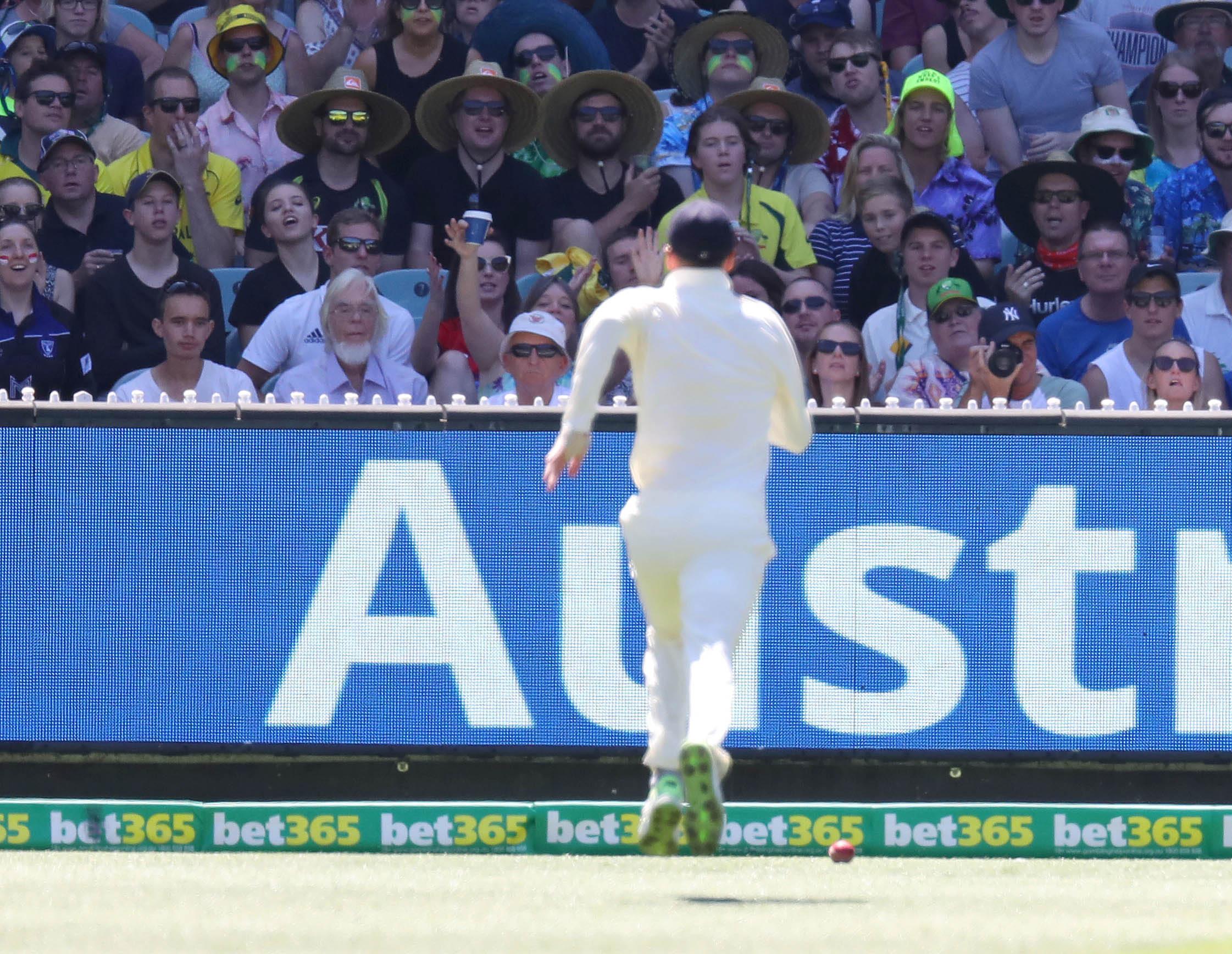
On an average I take between 500-800 shots depending on the game and how it’s going. It’s pure adrenalin that keeps me going through the day as I wait to grab the perfect shot - and end up with hundreds of not-soperfect ones in between.
I try to be across the game including the history, scandals and statistics or I could miss an important moment. Sometimes it can get long and arduous but never boring. It’s a highfocus job with not many breaks but the thrill of watching the sports from the other side of the camera is unparalleled.
Out of the game, the players and the crowd, the best images come from the fans. During

this year’s matches, particularly the Boxing Day match the Indian supporters were highly visible, with thousands attending all revved up and noisy. The Swami Army and Bharat Army offered full throttle support to the visiting Indian team.

From young girls holding placards for Virat Kohli to take selfies with them to Aussie fan club The Richies, there was never a dull moment at the G. I got amazing response from the crowd. They tried to capture my attention, offered high-fives when I walked past them or went delirious with posing when I aimed the lens towards them.


The cricketers, particularly the Indian team, did not warm up half as much to the cameras though. Despite our close proximity the established players avoided eye contact, remained aloof and mostly unsmiling. Some of the newcomers however would acknowledge my presence amongst the group of press photographers and occasionally smile at me.
I recall that the Paksitani cricketers when
they were in Melbourne for the last match were a friendlier lot in comparison. I would often get asked, “Ki haal hai, bhaji?” (How are you brother?)”.
Indian cricketers like Kuldeep Yadav, Mayank Agarwal and K L Rahul, however, were more willing to hold or slow down to allow for a better shot. Jaspreet Bhumra even posed for photos with his fans in front of the bays. The superstars, on the other hand, did not seem as accessible. Virat Kohli who presented his signed cricket pads to a young boy in the audience recently made an exception.


As India dominated the attack in Melbourne, the crowd was abuzz with excitement and
that made for some great photos. The stadium erupted with deafening chants of “Kohli Kohli” or “India India” and the Indian tricolour flew everywhere. Creative slogans and posters popped up in the bays and little children were swept up on shoulders to allow for better viewing. There were opportunities everywhere to capture the sweeping excitement and I went completely trigger-happy. As a sports photographer I have my fair share of blurry images whilst trying to capture someone in action but the inspiration and drama of the game keeps me sharp and focussed. Just like the sportsmen that I capture with my lens, I also rely on practice, practice and more practice.

Out of the game, the players and the crowd, the best images come from the fans.
Eminent academic and former economic adviser to the Kerala government, Gita Gopinath has taken over as the International Monetary Fund's (IMF) chief economist in a time of global financial uncertainty.
In a sign of growing women power, she joins a select group of four women who will dominate the global economic sphere - her boss and IMF's Managing Director Christine Lagarde, World Bank's chief economist Pinelopi Koujianou Goldberg, and Kristalina Georgieva, the Bank's CEO who will become its interim President next month.
They confront the confluence of a retreat from globalisation, a trade war between China and the US, uncertainties in Europe over Brexit, weakening of several currencies against the dollar and the growing inequalities between nations and within countries.
When Lagarde announced in October Gopinath's appointment with formal title of Economic Counsellor and Director of the Research Department, she called her "one of the world's outstanding economists, with impeccable academic credentials, a proven track record of intellectual leadership, and extensive international experience".
"All this makes her exceptionally wellplaced to lead our Research Department at this important juncture. I am delighted to name such a talented figure as our Chief Economist," Lagarde said.
Before coming to the IMF, where she succeeded Maurice Obstfeld, Gopinath was the professor of International Studies and Economics at Harvard University.
She was concurrently appointed in 2016 as the economic adviser to Kerala Chief Minister with the rank of principal secretary.
She has also served as a member of the Eminent Persons Advisory Group on G-20 Matters for the Indian Ministry of Finance.
In addition to helping formulate policies for the IMF and set strategies and evaluate performance of nations, she will oversee the World Economic Outlook Report that is considered a major survey of the global economy.
A significant aspect of her position will be helping set the conditions for countries seeking bailouts from the IMF. Often the terms call for stringent financial regulations
and unpopular belt-tightening for the recipients.
A graduate of Lady Sri Ram College in New Delhi, Gopinath received her MA degree from the Delhi School of Economics. She went on to Princeton University from where she got her Ph.D in economics in 2001 for her work on international macroeconomics and trade.
Gopinath was an assistant professor at University of Chicago before moving to Harvard in 2005. She received the Bhagwati Prize for the best paper published in the Journal of International Economics in 2003 and 2004.
In 2014, she was named one of the top 25 economists under 45 by the IMF and was a World Economic Forum Young Global Leader in 2011.
Her extensive research and writings include a critique of Prime Minister Narendra Modi's demonetisation in 2016.
Writing in the Project Syndicate within days of the demonetisation, she presciently said the government "seems to be causing collateral damage to India's economy."
Facebook has elevated its senior Indianorigin executive Karandeep Anand to head Workplace - the company's two-year-old enterprise communication tool now being used by over 30,000 organisations globally including in India.
Anand, who was earlier Head of Product for Facebook Marketplace and Payments services, would handle the product team and work closely with Julien Codorniou, current Vice President of Workplace.
As Head of Product for Marketplace and Payments tools, Anand's team was responsible for powering commerce across Facebook, Instagram, Messenger and WhatsApp.
"Karandeep will be partnering closely with Julien Codorniou, who will stay in his current VP role to lead Workplace sales and partnerships," the spokesperson added.
Before joining Facebook nearly four years back, Anand who is an alumnus of International Institute of Information Technology (IIIT), Hyderabad, spent 15 years at Microsoft in various key roles.
"I'm excited to now be part of the journey of bringing Workplace to companies across the globe and help them unlock the potential of their biggest asset - people," Anand wrote on his LinkedIn profile.
Facebook launched Workplace in 2016 to help make companies more connected and productive.
Currently, more than 30,000 organisations are using Workplace worldwide - including Walmart, Heineken, Spotify, Lyft and the Reliance Group. "A company's culture is leading indicator of its success and the productivity of its work force. Workplace brings the power of shaping culture by connecting people at work in ways never imagined before," Anand wrote.
Facebook in 2017 launched the desktop version of its Workplace Chat app that can be downloaded by anyone on PC, Mac, Android or iOS.
Workplace Chat includes video chat with a co-worker or group, screen sharing and file sharing.
"Workplace is one of the fastest growing Software-as-a-Service (SaaS) product and a key growth area for Facebook," said Anand.
American-Sikh communities have urged the Pakistan government to make sure that the Kartarpur Sahib Complex (KSC) is maintained in its original state. The American Sikh Council (ASC) said in a statement recently, "Any structural changes and/or additions to accommodate upcoming huge visitors either coming from India, Pakistan or the Sikh diaspora living across globe by lodging to restrooms and more must be done at a distance, away from the main KSC so that the Kartarpur Sahib original farms, natural areas spread around 100 acres of land that belonged to Guru Sahibji, and the forest areas around the River Ravi can retain as much of its originality as possible.
"This needs to be preserved in its original landscape for posterity."
The appeal was made in the background of recent development where both Pakistani and Indian governments agreed to open up the Kartarpur Corridor for Sikhs to visit the
Boats get freshly adorned in preparation of the Kumbh Mela festival in Allahabad, India, 8 Jan. Millions of Hindu pilgrims are expected to take part in the large religious congregation that begins this month on the banks of the rivers Ganges and the Yamuna. Photo: AP

place where Guru Nanak Dev, the founder of Sikhism, spent 18.5 years of his life as a farmer, husband, father while spreading the word of love, humanism, universal sisterhood and brotherhood.
Gurdas Singh, ASC president, and Gurinder Pal Singh, Sikh in America (SIA) president, told Dawn news via phone that the Pakistani government might change the original archeological and cultural structure and lawns of the complex.
Gurinder Pal Singh said they feared that in the name of development sometimes original and historical architecture were not being taken care of by contractors.
"Such efforts must be and should be kept at bay without compromising original structure spread across 100 acres," he told Dawn. He said Sikhs everywhere yearned to visit Kartarpur and see the fields that their "Guru" tilled with his own hands, the place where he lived, the trees he sat under and feel and touch their forehead on the same dusty soil that their Guru walked on!
Both ASC and SIA Presidents thanked the Pakistani government for opening the Kartarpur Corridor and taking "proactive step towards peace and amity of two people (Indian Punjab and Pakistani Punjab) who have so much in common, from language to food, from Punjabi poetry to clothes and so much more".
Kartarpur Sahib can be called the first Gurdwara which was established in 1521.
An Indian-American teenager has won the inaugural "Digital Transformation Hackathon" at Cornell University for designing a device to detect the actual pain level of a patient during a diagnosis. The device designed by 17-year-old Mahum Siddiqi and her team uses neurological activity occurring in one's brain to help doctors more efficiently determine someone's pain levels.
"It's incredibly upsetting and problematic how hypothetical the concept of pain diagnostics is. Doctors have no way of knowing how little or how much pain someone is truly experiencing when they go in to be diagnosed," Siddiqi said in a statement on Friday.
A Year 12 student at Vestal High School in New York, Siddiqi was the only non-graduate student competing at the hackathon held earlier in December.
She and her team won the first prize at the competition, and are now working with representatives from companies such as Microsoft to produce a prototype of their pain-detecting device, the statement added. "We need to design a system where patients are looked at as a whole, and doctors are able to know for sure, using our device/pure science, how much pain a patient is experiencing instead of just their personal description/perception of their own pain," Siddiqi said.
Following the expulsion of USACA a couple of years ago, the International Cricket Council (ICC) on Tuesday welcomed USA Cricket as its newest member.
According to an ICC statement, USA Cricket's application to become the 93rd Associate Member in accordance with the ICC Constitution was approved by ICC Members following the Membership Committee's recommendation to the ICC Board late last year and is implemented with immediate effect.
As a Member of the ICC, USA Cricket is now eligible to receive funding in accordance with the ICC Development Funding Policy and can sanction domestic and international cricket in the United States.
Welcoming the new body, ICC Chief Executive David Richardson said, "This is the culmination of a great deal of hard work and I would like to congratulate the Chair of USA Cricket, Paraag Marathe, and the Board, on this important milestone and wish them all the very best for the future."
USA Cricket Board Chair Paraag Marathe said, "USA Cricket was established to bring together the cricket community in the United States, develop the game and unlock the sport's undoubted potential for growth. Today's confirmation that it is the ICC's newest member is a significant staging post on that journey."
The hugely-popular two-month-long Indian Premier League (IPL) will be played in India from March 23 despite the Lok Sabha elections due in April-May, ending the uncertainty over whether it would be shifted to some other country.
In 2009, the cash-rich tournament was held in South Africa due to the general elections while the 2014 edition was partly played in the United Arab Emirates (UAE) before returning home for the latter half.
The announcement on the commencement of the 12th edition of IPL was made by the Supreme Court-appointed Committee of Administrators (CoA).
"Based on the preliminary discussions with the appropriate central and state agencies / authorities, it was decided that the 12th edition of the world's most popular and competitive T20 tournament will be scheduled to be played in India," an IPL release stated.
"It is proposed that the IPL 2019 will commence on March 23. The detailed schedule will be finalised in consultation with the appropriate authorities. The CoA will then have a detailed discussion with all the stakeholders before releasing the IPL 2019 Schedule," it added.
Even 12 years after she survived an acid
attack by a jilted lover during a train journey to Delhi from her hometown Varanasi in Uttar Pradesh in April 2006, Pragya Singh remains a beacon of hope for scores of such burn victims. The gritty 35-year-old gritty has helped about 200 women victims of acid attacks undergo 300 surgeries for free and gave them not just legal and financial aid but also a job to rebuild their lives.
"The horrific incident happened 12 days after my marriage when I was 23. A vindictive ex-lover threw acid on my face and body. I was in intensive care for several weeks and had 15 surgeries over two years to open my nasal cavity and mouth," recalled Pragya as she spoke to IANS.
Living in Bengaluru since 2007 with her husband and later giving birth to two young daughters, Pragya set up Atijeevan Foundation in 2013 to make lives of other burn victims better and happier.
Though the traumatic incident took Pragya down the cosmetic surgery path to restore her face, she learned to accept her appearance to march ahead in life.
"I reconciled to the inevitable, as regaining the original face was wishful thinking," she said.
Determined to get back on her feet, Pragya put an end to the reconstruction surgeries once her vital organs became functional.
"Instead of being a victim, I decided to be the change for other women who are hapless victims of such a heinous crime. I have been fortunate to have a supportive family financially and emotionally during the treatment and recovery phase," noted Pragya.
Acid attacks on women in their 20s are mostly by men whose romantic advances were rejected, or spurred by family feuds, including dowry harassment and land disputes.
"Women account for about 80 per cent of acid attacks, while the remaining 20 per cent are on men and children," said Pragya.
The caustic attacks with sulphuric or nitric acid, on sale at chemical stores, melt skin tissues to expose bones and cause damage to the eyes, leading to partial vision or blindness.
"Each surgery for restoration of functioning of nose, mouth and eyelids cost a whopping Rs 60,000-1 lakh, depending on the intensity of the acid burn," revealed Pragya.
"Some of the victims undergo 35-40
surgeries after a severe burn, which are expensive and cause distress for years to them and their families," she said.
Her foundation provides acid burn survivors a holistic support system and has tied up with over 15 private hospitals across the country to provide quality medical care to acid burn patients. The NGO, which functions on private donations, also bears the surgery cost for women victims who cannot afford it.
One such survivor, Deepmala Tiwari of Lucknow, 28 was attacked with acid by her husband in 2014 when he learnt that she made more money than him.
Unable to afford the treatment, she reached out to the foundation after learning about it through a friend.
"Pragya has been in touch with me ever since, and the foundation took care of all the costs for me to receive over 10 surgeries and filled confidence in me and my family to continue leading our lives," she recounted.
She also received a course in computer science before returning to her teaching job in Balrampur. Deepmala now supports other acid attack victims as a coordinator for the foundation.
Deepmala in turn referred the foundation to 23-year-old Reshma Khatun, who suffered an acid burn at the age of 19 after she rejected a man's proposal for marriage.
"With the foundation's support, I could complete a vocational course in computers and find a job," Noida-based Reshma told IANS.
Reshma, who works as a housekeeping staff at a 5-star hotel in Noida, said an acid attack makes earning a living difficult, with employers reluctant to hire the survivors.
According to the National Crime Records Bureau (NCRB) of the Union Ministry of Home Affairs, there were 200 cases of acid attacks on women in 2016 alone, although NGOs estimate the number of such attacks to be about 500-1,000 across the country.
"Seven of our field workers are acid burn survivors. When they visit homes of fellow victims, the understanding among them and their families is better as life need not stop because of the attack," said Pragya.
With the help of volunteers, the foundation also hosts camps and workshops for the burn survivors across cities and towns in the country, offering free legal assistance, medical treatment and counselling.
"We empower burn patients with skills

and vocational training for enhancing their livelihood. We help them in learning computer skills, handicraft making or pursuing higher education. Enabling surgeries are not enough as they need a purpose to get back to normal life," said the burn-survivor-turned-activist.
Following the Supreme Court's 2015 ruling directing states to consider acid attack victims as disabled for jobs, India Inc, which was hesitant to hire burn patients, have been open to include them in their workforce, as part of their quota to include the disabled in their companies. Even as she admits that ban on sale of acid in the market was not feasible, as it is used for industrial products and sanitation, she wants states to regulate its supply in a diluted form across the country.
Over 50 youth organisations from various states joined 'Yuva Halla bol' movement under one umbrella and called for holding a historical youth summit in national capital on January 27, protesting against all selection commissions, depleting job opportunities in the country and expose corruption in recruitments making government accountable. Addressing the media at Delhi Press Club, representatives of 50 youth groups such as Berozgar Sena, Yuva Shakti Sangathan, Youth for Swaraj and others demanded that all the vacancies in the government and public sector be immediately filled.
"We demand that the government must implement a model exam code to ensure that every recruitment process is completed within 9 months," said Yuva Halla Bol leader, Anupam.
"The government must also ensure fair selection by ending the present regime of paper leaks, delays and corruption in recruitment process," he said. "While 24 lakh posts lie vacant, the youth is frantically looking for jobs."
Launched in March 2018 during the spontaneous nationwide youth upsurge against the SSC scam, the #YuvaHallaBol initiative has evolved as a powerful platform for India's job-aspiring youth, aggrieved and agitated by the incompetence and insensitivity shown by recruitment bodies.
You may have missed it amidst the sheer volume of batting records India broke during the first two days of the SCG test match, but early on during the match, Indian broadcaster Sony quietly switched off Australian commentator Kerry O’Keeffe, blacking him out from Indian airwaves. Instead, Sony (which passes through the feed from Australian broadcaster Fox Sports) opted to replace O’Keeffe’s stints at the microphone with commentary from a local commentary team whenever the 69-year-old was on air, blacking him out from Indian airwaves.
First, to O’Keeffe’s comments. They were not well thought-out and were clumsy at best; but they were by no means malicious.
First, O’Keeffe joked that Mayank Agarwal’s first class triple-century against Railways came against the Railways “canteen staff”, a comment for which he apologised on-air on the very same day. Then O’Keeffe remarked, poking fun more at his own inability to pronounce the Indian players’ names than anyone else, “Why would you name your kid Cheteshwar Jadeja?” It was a comment so benign that, were it said on the field, no one would have batted an eyelid. Nevertheless, O’Keeffe penned a generally well-written apology letter to Indian fans, where the matter ought to have ended.
O’Keeffe’s sledgehammer wit centres around regular self-deprecation and a steadfast refusal to take anything – especially himself – too seriously. Commentary in Test cricket is a difficult art; it is not easy to keep the viewer engaged and occupied in a game where there are often long and meandering periods of nothingness. To adopt O’Keeffe’s approach is to acknowledge the vicissitudes of Test cricket, which ebbs and flows perhaps more than any other sport in the world.
It is worthwhile noting also that O’Keeffe is one of the most well-researched




commentators in world cricket; in fact, he is known to have researched club statistics even before visiting local club trivia nights at which he makes occasional appearances. It is a trait that puts O’Keeffe squarely outside the box of “ignorant foreigner”.


In recent times, the BCCI’s response to even the mildest criticism – however harmless – has been nothing short of Orwellian in nature. In fact, sources close to Sony and the BCCI are reported as saying, “We cannot have someone making snide remarks on Indian players”. It is a stern reminder of the BCCI’s clout over local broadcasters and harks back to the Board’s controversial sacking of popular commentator Harsha Bhogle in 2016.

Bhogle, who has for some time been one of India’s most respected commentators – and incidentally commentates alongside O’Keeffe on Fox Sports, as well as ABC Grandstand – had been calling a March 2016 match between India and Bangladesh for Star Sports. Known as a fair and polite commentator – far less parochial than the likes of the myopic Manjrekar and Chopra – Bhogle was presenting, as ever, a balanced view of the game, praising the Bangladesh team and players. This is hardly a laudable feat, given it is something most international commentators are accustomed to doing. Yet to some, Bhogle’s conduct was unacceptable; and unfortunately, some of his detractors happened to be the most influential people in India.
Amitabh Bachchan commented, “With all due respects [sic], it would be really worthy of an Indian commentator to speak more about our players than others all the time.” This was then retweeted by Mahendra Singh Dhoni, with the latter commenting, “Nothing to add”. Within days, Bhogle was sacked by the BCCI, speaking volumes of the inability of some Indian fans – and players – to see the bigger picture.
The removal of Kerry O’Keeffe’s commentary from Indian feeds is the latest example of the BCCI’s increasing aversion to any scrutiny and criticism. But it goes hand in hand with the BCCI’s ongoing governance woes: a milieu in which transparency has become the first victim of power.
BCCI’s response has been nothing short of Orwellian in nature
Why Kerry
“blackout”
a step too far
Work Visa Applications and Corporation Support
• 186 visas for permanent residency, all types

• 482 short and long-term occupations, find out how to meet the requirements for work experience
• 400 visas for short-term highly specialised work
• Company support: know your obligations, rights and limitations

Extremely
• 100% success rate for partner visas
• 100% success rate for AAT/MRT reviews
• 100% success rate for all permanent visas
Highly successful in complex Australian immigration problems:
• PIC 4020
• Adverse information
Character s501 and Notice of Intention to Consider Cancellation or Refusal

• Health Waivers
• Visa Cancellation Notices
• Complex Australian Citizenship Applications
Email: rowena@rpmigration.com.au
Website: www.rpmigration.com.au




















Ithink my grandmother, Nani, is secretly an Australian millennial in disguise. She likes surfing Netflix, watching YouTube videos on her iPad and bops in time to Ariana Grande songs. I learned these things about Nani whilst she has been staying with us in Sydney this summer. She hasn’t been to Australia for almost 20 years. And since she landed Down Under, what’s the thing that’s impressed her the most?
The avocados.
Although she’s had them many times before, the avocados she’s had on this visit have been the best, she says. She likes the taste and texture, but the thing she likes most is the dishes that her granddaughter makes with them (her words, not mine!). Like rice and daal is a staple for Indians, avocado toast is a staple for Australian millennials (and now a staple too for visiting Indian Nanis who masquerade as Australian millennials).
Of course Nani had heard about avocados in Australia, because the Indian newspapers had suggested that young people in Oz cannot afford to buy houses because they eat too many avocados.
But at least they’ll be healthy, I tell her, because the avo contains abundant amounts of B Vitamins, Vitamin E and Vitamin K; and are loaded with fibre, healthy fats and antioxidants. At this time of year they are plentiful in supermarkets around Australia, so here are some recipes that my Nani and I have been enjoying.



(Serves 1)
Ingredients
Half a medium-ripe Hass avocado
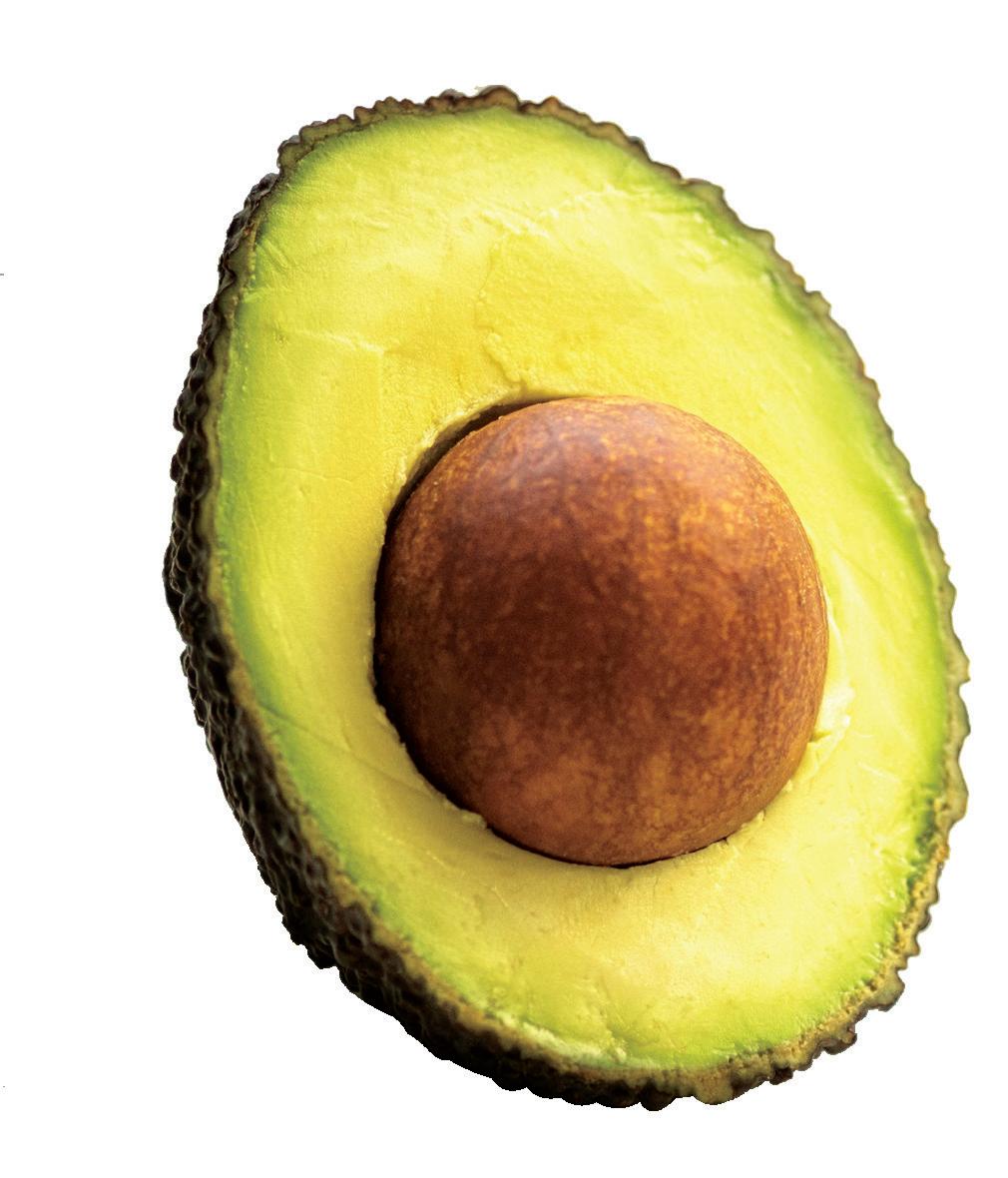
2 pieces of bread, toasted to your liking (rye or sourdough are my top picks)
10 cherry tomatoes, halved
2 stems coriander and their leaves, chopped
1 tbsp Danish feta
Squeeze of lemon
Salt and pepper (or chilli flakes) to taste
Pinch saffron
Method
Stone, scoop and mash avocado in a bowl. Add tomato, coriander, lemon, salt and pepper and mix.
Spread on toast and sprinkle with feta.
Gobble up quickly before other family members ask for a bite.
If you are fancier than Nani and I, you can top with a poached egg or balsamic vinegar.
(Serves 4)
Ingredients
1 ripe avocado
½ cup fresh basil leaves
2 smallish cloves garlic (or biggish…up to you)
1 heaped tbsp pine nuts
1 tbsp olive oil
1 tbsp lemon juice
Salt and pepper to taste
Method
Chuck all ingredients in food processor and blitz. Stir through fresh cooked fettuccine pasta. Serve with parmesan cheese and a drizzle of olive oil on top.
(Serves 4)
(or sometimes just 1 if you are sneaky enough)
Ingredients
125g cooking chocolate, chopped (I use half milk chocolate and half dark chocolate)
2 large ripe avocados
3 tbsp unsweetened cocoa powder
¼ cup almond milk (or regular milk)
1-2 tbsps sifted icing sugar OR 1-2 tbsps
maple syrup
1 tsp vanilla essence
Method
Melt chocolate over bowl of boiling water on the stove or in the microwave; and allow to cool.

Stone avocados and scoop flesh into food processor.
Add melted chocolate, cocoa powder, almond milk, sugar (or syrup), vanilla and salt. Blitz to mix, and taste to see if you need more sweetener. Spoon into glasses and chill for 2 hours. To serve, top with cream or fresh berries or both.

Seeking professionally qualified match for Brahmin, vegetarian girl born in 1985, and working as a doctor in Sydney. The family are well settled in Sydney and prefer boy with Australian citizenship or PR. Please contact aussyd08@gmail.com
Well-settled/professional match invited for Sydney-based Punjabi girl, IT professional/business analyst, nevermarried, 44/5'6"; attractive, fair, jolly nature and a good mix of Indian and modern values. Working in an MNC.




Australian citizen. Educated family. Parents well settled. Send details with photo: sydgirl09@gmail.com


Seeking professionally qualified settled match for Sydney based, never married Aus Citizen, Hindu, Punjabi Khatri 45, 5'3" slim, fair, attractive girl. Girl is postgraduate and is working on a good position in government organisation. Please send details with photoIndsyd2016@gmail.com.
SEEKING BRIDES
Indian Muslim man, 43 years old,
divorced, lawyer, Australian citizen, based in Sydney, seeking a practising Muslim bride below 35 years of age. Contact: 0424 457 180.
Indian Christian Protestant parents seeking a suitable match for their 38-year-old son, a software engineer, born and brought up in Australia. Seeking Protestant girl between 28 and 34. years. Email: sammy5073@gmail. com or call 0403 836 360.
Suitable match for handsome, 1986born, 5’7”, Mair Rajput Goldsmith
boy (Punjab born), Australian citizen. Working as a manager in Melbourne. Caste no bar. Please share bio and photos on Whatsapp 0470 388 064 or email: ronr275@yahoo.com.au
Seeking professionally qualified settled match for Sydney based, never married Aus Citizen, Hindu, Punjabi Khatri 44, 6', athletic built boy. He is project manager with engineering background and is working in a private organisation. Please send details with photoIndsyd2016@gmail.com.

March 21 - April 19
You’re in the limelight this month as the Star card comes with many benefits. If single, practice creative visualisation for a significant other to manifest in your life. A property sale or lease comes through. Financial gains are predicted and future prospects also improve. Some medical tests could lead you to the root of a health issue; an old condition could flare up again. A friend, teacher or mentor provides guidance and you will focus your energy on worthwhile issues.
July 21 - Aug 22
Change, fluctuation and a fine balance is what the start of the new year for Leos is all about. Every issue you thought you had a handle on will rise up to challenge you. Everyday irritants propel you to maintain an emotional balance even if the situation is difficult. A moderate amount of success in finances is foretold. Everything in your life is soon to be transformed and you will move in a different direction, which is a very positive shift.
SAGITTARIUS

Nov 22 - Dec 21
A major disappointment by someone you love causes heartache and will make you question your equation with this person. You long for a real relationship based on care and trust and won’t settle for less. Your emotional attachment to a situation or outcome will end. Watch out for fatigue or stomach issues. Setbacks force you to take control of your life. Your success comes from applying metaphysical principles to everyday life. Finances improve suddenly and in time your desires will be fulfilled.

April 20 - May 20
It is a time to heal any inner wounds that are holding you back. Work keeps you engrossed this month, though creative pursuits tempt you in your down time. If you are in the initial stages of a relationship, be patient, as things move slowly. A happier and relaxed social life is predicted; you just might meet the love of your life this month. Watch out for problems with your knees or feet. A long term problem will get resolved.
VIRGO

Aug 23 - Sep 22
A busy month with focus on planning, executing and tying up loose ends to move on to something new. Additional responsibilities might be thrust upon you and you might consider a short trip to take a break from them. A relationship that needs some revival will flounder and it will add to the run down feeling you are experiencing. An unexpected career opportunity will come your way. Whatever you do, wait till the course of action is clear before you do anything.
CAPRICORN
Dec 22 - Jan 19
A seven indicates spiritual growth and introspection. But the Tower card can be God’s hammer breaking down your cocoon – devastating conditions, a divorce, or health and financial problems. It is a destiny related card so least resistance would work best. Have faith that any drastic occurrence right now is the worst that can happen and things will only get better. New beginnings and improved conditions are foretold which help you regain a sense of peace, emotional balance and you get your mojo back.
GEMINI

May 21 - June 20
The focus is on promising enterprises, career opportunities and investment potential this month. Make the most of it. Travel for work or social activities is predicted. New elements at work leave you unsettled. Even if you are with someone in a relationship, you might feel a distance between you. Guard against accidents on the home front and what you eat. Money owed to you remains blocked but it will come through. Your best success comes from a new way of working.
LIBRA

Sep 23 - Oct 22
Unforeseen problems and setbacks could cause depression. A struggle with your conscience could occur after you have taken a decision. A secret sorrow keeps you low but don’t let circumstances defeat you. The outcome is favourable for medical tests though a chronic health issue causes problems. Finances are stable but you still feel insecure. Save some more if that is the case. A negative situation will soon end. Stay positive: don’t let an indecisive attitude get the upper hand.
AQUARIUS

Jan 20 - Feb 18
The new year brings its own challenges for Aquarians and January will be difficult. Blocked progress, anxiety and depression bog you down. In a relationship, your fears are largely unfounded, and any separation is temporary. Expect supreme success at work and financial gains as well. Be careful of what you eat or you could have stomach problems. Don’t ignore any health issues you have. New awareness about your future and relationship make you hopeful. Wait for things to resolve themselves.
June 21 - July 20
You feel the need for a break from responsibilities though unstable conditions, work and health all demand attention. Watch out for office politics or someone deceitful in your personal life. Don’t postpone that mammogram, ladies; and don’t take on too much or it could affect your health. Deadlines and striving for perfection will only aggravate you further. A business dispute ends amicably and unexpected financial gains come your way. Maintain emotional and mental balance and keep things in perspective.
SCORPIO

Oct 23 - Nov 21
A Capricorn mindset might hold sway over Scorpios this month, making them practical, studious and less intense. A friend plays matchmaker or troubleshooter and you handle any issues in your romantic life with maturity. Health will bother you with problems related to your back, stomach, ears or throat. Express yourself more if it is the latter. Money will be slow in coming but there are unexpected financial gains round the corner. Be willing to listen and act upon new ideas.






Feb 19 - March 20
Nines indicate that certain events or situations are nearing completion. Personal issues, material well-being and health dominate this month. A chance meeting could lead to financial gains so keep an open mind. The hollowness you feel within is but temporary so hang in there and keep the faith. Don’t let your challenges affect your health; you could suffer from poor sleep. Focus your energy into areas that fulfil you and see how your cup of happiness overflows.
are pumped up about playing real life characters. One-film-old actress Janhvi Kapoor has reportedly taken up a biopic on Gunjan Saxena, an Indian Air Force combat pilot.
What about the men, you ask?
Oh yes, that trend looks set to continue, after Milkha Singh, MS Dhoni, Sanjay Dutt….
Shah Rukh Khan is set to play India’s first cosmonaut Rakesh Sharma in producers Ronnie Screwvala and Siddharth Roy Kapur’s Saare Jahaan Se Accha. Sharma flew on board a Soyuz spacecraft in 1984 as part of a Soviet Interkosmos mission. His daring flight fired up the imagination of an entire generation and when asked by then Prime Minister Indira Gandhi, what India looks like from space, Sharma had uttered the now iconic words: "Saare jahaan se accha".
In the recent past, inspirational stories of sport stars like Mahendra Singh Dhoni and Milkha Singh, and freedom fighters such as Subhas Chandra Bose and Bhagat Singh, have been told on the big screen. Soon, cinema halls will be taken over by biopics on women achievers, starting with Kangana Ranaut's Manikarnika - The Queen of Jhansi based on the warrior queen.
Trade analysts are quietly confident that Manikarnika will hit the jackpot at the box office when it releases later this month, no thanks to the popular star in the lead role.

Meanwhile, director Indrajit Lankesh is working away at his biopic on the southern film industry's adult film star Shakeela.
"It is a story about an actress who has seen a life from rags to riches to rags again,” he said of his film, which stars actress Richa Chadha as Shakeela.
Shakeela rose to popularity following the tragic and untimely demise of the legend Silk Smitha.
Richa says it was the story of Shakeela's life, "with all the trials and tribulations", that she found very dramatic.
"When I first heard it, I wondered how it hadn't been adapted into a screenplay already. I am happy I got to act in this movie because I really grew a lot with it," she said.
Interestingly, Shakeela herself makes

a cameo appearance in the film.

As well, we have Deepika Padukone who is also set to take the story of acid attack survivor Laxmi Agarwal from real to reel. Deepika has said of this project, "It's a very important story and it's a true-life incident, so hopefully good things will come out of it."
Badminton star Saina Nehwal will come to us on screen looking a lot like Shraddha Kapoor, some time this year. And Jacqueline Fernandez must be pedalling away in training if reports are true that she is set to play ace Indian cyclist Deborah Herold in a film.
Even down south, filmmakers are opening up to the idea of biopics on women. If last year's Mahanati, a film about the rise of female south Indian superstar Savitri, won the hearts of many, people can't stop praising popular south Indian actress Nithya Menen for her look in the new poster of the film The Iron Lady, based on late politician Jayalalithaa.
It's not just established actresses who
And then there’s Ranveer Singh playing Kapil Dev is the film ‘83, based of course on India’s first ever Cricket World Cup win. Buzz is that real-life wife Deepika Padukone might play Kapil’s wife Romi. We will soon be seeing Vivek Oberoi playing Prime Minister Narendra Modi in his biopic (first look revealed on 7 January).
Abhay Deol, who is known for doing different roles, will apparently be seen in a sports film next. According to reports, Abhay has been roped in to play the lead role in a rugby drama tentatively titled Jungle Cry. It will see him reprise the life of rugby coach Rudraksha Jena from Bhubaneshwar, who led an under-14 team to win the International School Rugby Tournament in London in 2007. Apparently Abhay is currently learning the sport.
Nawazuddin Siddiqui as Bal Thackeray – we can’t wait for that one…
Question is, who do you think is best fit to play Virat Kohli, India’s newest phenomenon?
A WARRIOR QUEEN, AN ACE SHUTTLER, A COSMONAUT, A FEMME FATALE: THESE AND MORE PERSONALITIES FROM REAL LIFE INDIA, COMING SOON TO A THEATRE NEAR YOU















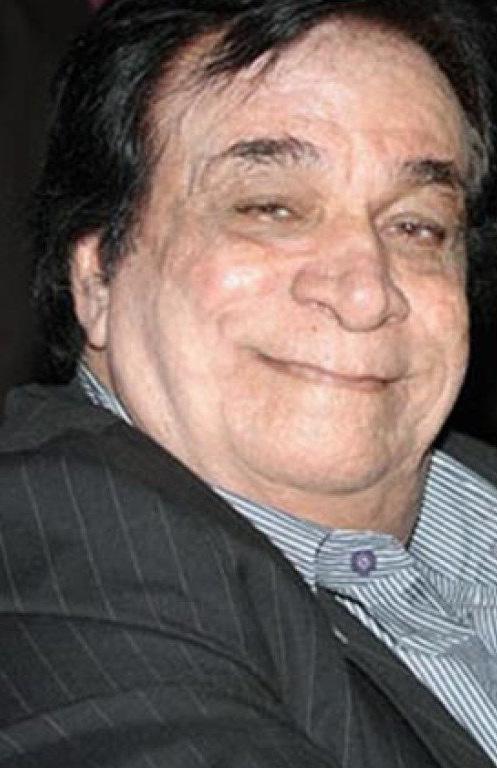
Kader Khan rose from the depths of a Dickensian childhood in the Bombay of the 1940s, surrounded by drug peddlers, prostitutes, pimps and assorted thugs to eventually embody the essence of Hindi cinema.
Growing up in Kamathipura, Mumbai's notorious red light district that is at once cruelly heartless and touchingly heartfelt, Khan absorbed a vast range of human frailties and poured them in to 700 films that he acted in and wrote.
Mrinal Sen is known as a film-maker who challenged prevailing social sensibilities and mores, holding a mirror up for society.

Sen (95), who died in Kolkata on 30 Dec 2018, was the last surviving member of the 'trinity' from Bengal - including master filmmakers Satyajit Ray and Ritwik Ghatak - who gave birth to the parallel (or new wave) cinema in the country.
The troika gave a new direction to the idea of filmmaking in India, with their intellect, spontaneity, knowledge of world cinema and deep understanding of the nuances of the medium that made the world look up in wonder and respect their creations.
A Marxist in belief, who, however, never took the membership of any communist party in India, Sen regaled in breaking age-old stereotypes, highlighting issues such as exploitation and erosion of values.
Take for instance the film Kharij (The Case is Closed), where the servant boy, a minor, working in a middle class family in Kolkata, dies by carbon-monoxide poisoning after being made to sleep in the kitchen. Fearful of facing retribution, police case, and weighed down by guilt, the young employer and his wife go all out to please the deceased's father. The bereaved man, however, displays great dignity, and returns to his village quietly, leaving the employers morally shattered.
Kharij shook the urban middle and upper classes so much that many changed their treatment of servants, particularly giving them better places to sleep.
Kharij was made in the 1970s - a time of great turmoil and political unrest in Calcutta with the Naxalite movement spewing blood on the streets - during which Sen’s films provoked urban society,
subtly capturing the political upheaval.
The highlight of the genre was the trilogy Interview (1970), Calcutta 71 (1972) and Padatik (1973). All three films are regarded as masterpieces for their social messages and political overtones.
Born on May 14, 1923, at Faridpur (now in Bangladesh), Sen made his first Bengali film Rat Bhore (The Dawn) in 1953, but it was his second directorial effort Neel Akasher Niche (Under the Blue Sky) that received acclaim in the country for its lyricism and humane qualities.
His next, Baishey Shravan (Wedding Day), earned him plaudits from the critics beyond Indian shores.
In 1969 came Bhuvan Shome regarded as an important milestone in the new cinema movement in India.
And then there were the gems Ek Adhuri Kahani (1971), Chorus (1974), Mrigayaa (1976), Oka Oori Katha (1977), Ek Din Pratidin (1979), Akaler Sandhane (1980), Chalchitra (1981), Khandhar (1983), Genesis (1986) and Ek Din Achanak (1989).
His last film Aamaar Bhuvan came in 2002.
Sen leaves behind a rich repertoire of 27 feature films, 14 shorts and four documentaries during a career spanning six decades.
Widely feted, Sen received the Padma Bhushan in 1981, the Dadasaheb Phalke in 2005, the French government's Commandeur de l'ordre des Arts et letters (Commander of the Order of Arts and Letters) in 2001, and Order of Friendship from the Russian government in the same year.
Sen served as a member of International Jury at various film festivals, including Cannes.
His autobiography Always Being Born was published in 2004.
There is no comparable figure in cinema anywhere in the world where a civil engineer juggled his writerly and actorly talents with such consummate ease in hundreds of movies for close to four decades. By Khan's own reckoning, he acted in 450 movies and wrote dialogues and scripts for 250 films. That is an astonishing output even by the generally prolific standards of Hindi cinema.
Since Khan made writing and even a certain type of performance look so effortless, he often does not get his due for his remarkable contribution to Hindi cinema. Although born in Kabul, Khan went on to capture the quintessence of India's everyday pluralism in his writings. It was under the tutelage of director Manmohan Desai, who commissioned Khan to write for his movies starting in the early 1970s, that he went on to powerfully capture Bombay's street swag as reflected in its language.
Desai said in 1986, "When I first met Kader Khan I told him, 'Tum miyabhai khali sher-o-shayri aur nawabi Urdu likhta hai. Hum ko kuchh gully ka chahiye. (You Muslim writers write only poetry and Urdu of the royal court. I need some street stuff.)'
It was under those promptings that in movies such as Roti (1974) and Amar Akbar Anthony (1977) Khan brought in the now famous Mumbai street patois into the Hindi cinema lexicon. Although his personal preference was high-minded and refined Indian and Russian literature, Khan perhaps subconsciously drew on his childhood memories to capture some of the street cool that audiences saw in movies such as Muqqadar ka Sikander (1978), Laawaris (1981), Coolie (1983) and somewhat later, Agneepath (1990).
At the time of the making of Agneepath Khan was at the peak of his craft and used to write and act so much that it was easy to discount his talent. The movie's default temperament was the kind of sauciness that one routinely experiences in Mumbai's streets, especially among the young population that has no option but to live by its wits. Social resentments of the dispossessed and disenfranchised in Mumbai often result in very distilled bitterness which gets articulated in the kind of lines that Khan wrote for
the film. What made them particularly striking was that it was against his known literary tastes of someone who loved high-minded Urdu poetry of the calibre of Mirza Ghalib and others.
His passion for education, which he was to fondly recall as a gift of his mother Iqbal Begum's backbreaking struggles, stayed with him throughout his life. Khan loved mathematics, physics, engineering, machine drawing and well into his latter life, a serious study of Arabic. Those who knew him well said he was at heart always a teacher even on the movie set.
Soft-spoken, polite and unusually internally drawn, Khan had the gift of the gab and could converse across many subjects and themes. In his passing Indian cinema has lost someone who straddled the three distinct worlds of the written, spoken and performed with rare ease.
Actor-filmmaker Rakesh Roshan, 69, has been diagnosed with early stage of squamous cell carcinoma, a type of cancer. Rakesh's actor son Hrithik shared the news via social media, before his father went in for surgery.
"Asked my dad for a picture this morning. Knew he wouldn't miss gym on surgery day. He is probably the strongest man I know.
"Got diagnosed with early stage squamous cell carcinoma of the throat a few weeks ago, but he is in full spirits today as he proceeds to battle it," Hrithik captioned the picture in which the fatherson duo have struck the same pose.
The note drew speedy recovery and good luck wishes from PM Modi, the film fraternity and fans.
Hrithik's former wife Sussanne Khan wrote: "He is stronger than any superhero. All will go smoothly."
The family has a cancer survivor in Sunaina Roshan, Hrithik's sister, who fought cervical cancer.
Sonchiriya, a dacoit drama, has been causing a bit of buzz since its gripping and power-packed trailer released recently.
WIN MOVIE TICKETS!
The Sushant Singh Rajput and Bhumi Pednekar starrer takes us back to the stark and dusty ravines of Chambal in the 1970s, as dacoit groups fought to take control of central India.
The Abhishek Chaubey directorial also features Ashutosh Rana, Manoj Bajpayee and Ranvir Shorey.
After successes with Ishqiya and Udta Punjab, Abhishek Chaubey takes us into a simmering war raging at the fringe of society where what we see is not always pleasant but never uninteresting.
Talking about the film, Bhumi said, “The expectations are extremely high. It's hard-hitting but at the same time it's very relevant and important. I think it has some really great performances and a lot of craft.”
Brutal to the bone, Sonchiriya touches raw nerves in our socio-cultural DNA which has allowed inequality to foster for generations. Now it's too late to even try to rectify the economic imbalance.
The film shows fringe people accepting their place and fighting for what they believe to be their fundamental right to survive.
We haven’t had an animal drama since… Haathi Mere Saathi? So now, let’s wait for… Haathi Mere Saathi.
Yes that’s the name of the new Rana Daggubati starrer, currently in production in Kerala. It is being described as highlighting the ‘man-animal relationship in a story inspired by true events and a
tribute to the 1971 classic film’ of the same name.
A trilingual, the film is being made simultaneously in Hindi, Telugu and Tamil with a different cast across languages. The film also stars Pulkit Samrat, Vishnu Vishal, Zoya Hussein and Kalki Koechlin.
Farhan Akhtar’s The Fakir of Venice finally hits the theatres on 18 Jan, a full decade after it was made. A comedy based on a story by Homi Adajania and set in Venice, it is directed by Anand Surapur and also stars Annu Kapoor and Kamal Siddhu.
In the film, Farhan’s character tries to pass off a Mumbai slum dweller (Annu Kapoor) as a holy man who can bury himself in sand as part of a live art performance.
In the lead up to its release, a song from the film was released recently. In the song Wako Naam Fakir, 15th century poet Kabir’s doha Had had so auliya is turned into a blues song by AR Rahman. With lyrics about the dichotomy of things, it seems a perfect introduction to the film.
Believed to be Farhan Akhtar’s first ever acting role, the film premiered at the Indian Film Festival in Los Angeles way back in 2009.

in the Delhi High Court on 8 Jan seeking a ban on the trailer of the movie The Accidental Prime Minister saying it has caused unaccountable damage to the name and fame of the office of Prime Minster.
The film, starring Anupam Kher as former Prime Minister Manmohan Singh, is based on the 2014 memoir of the same name by Sanjaya Baru, Singh's media advisor from 2004 to 2008.
Actors Anupam Kher and Akshay
Khanna play Manmohan Singh and Baru in the film, slated to release on 11 Jan.
The PIL says the film will harm the image of a constitutional post such as Prime Minister and will give it a bad name nationally and internationally. It was claimed the film's producers have not taken any consent from Manmohan Singh, Congress President Rahul Gandhi and his mother Sonia Gandhi to perform their characters or sketch their political lives. As per Central Board of Film Certification (CBFC) guidelines on films based on real-life characters, a 'no objection certificate' (NOC) is required. But for the trailer, no such NOC was obtained, the petitioner said. The plea also requests the court to quash the CBFC's certificate given to the film.
While the BJP shared the trailer on its Twitter timeline, some Congress leaders have objected to its content.
What’s the chitchat between Virushka here?

PIL

A Public Interest Litigation (PIL) was filed
ALIA BHATT OR SOFIA VERGARA IN ZIMMERMANN?



+ Share your views with us on our Facebook page /IndianLinkAustralia
IANS
Match the following stars to the tweets below Anupam Kher, Karan Johar, Anushka Sharma They came. They conquered. History written and created by this bunch. Huge congratulations to all players, coaching unit and support staff; it takes undying perseverance and solid conviction to focus on what's important and shut out the rest.
A first for koffee!! CRICKET!! With these young forces I had a blast!! They hit it out of the park!
While we are dealing with the trailer issues of #TheAccidentalPrimeMinister on @YouTube, here is a small request from our team with the link. Please retweet as much as you can. Thanks
What’s the chitchat between Katrina and SRK here?

SRK: “Yaar, Katrina, ye picture ka naam bhi Zero, aur box office collection bhi!”
Congratulations, Hetal Shah, Croydon NSW You win a movie ticket!
For more caption entries, see YOUR SAY Page 8
Many folk stupidly spend their lives trying to impress other people, when what they should really be doing, of course, is trying to impress their step-counters.
Smartphone health apps and Fitbit-style wristbands not only monitor your activity level but constantly encourage you to post it on the Internet for the world to see.
So of course people become competitive about never letting a single step go uncounted. In an Internet discussion, a reader from Mumbai lamented, “I lost my Fitbit so now I can’t move.”
If you are a step-counting addict, here are four ways to boost your score.
•Put your Fitbit in your child’s pocket and then feed him or her a sugary snack.

•Every time you hear music, indulge your inner Barenboim by conducting it.

•Hang the thing on your dog’s collar and send it out for a run around the park.
•Get a ladder and hang your Fitbit from the ceiling fan.
Most attractive advice I ever got was this: if you eat three meals a day at buffet-style
restaurants, your Fitbit will think you are an exercise nut.
Now THAT’S an exercise program I could really go for.
The leaders on some website health pages are recording 80,000 steps a day each - which is pretty impressive, since running an entire marathon only gets you about 45,000 steps.
How do you achieve those kinds of scores?
I got interested in this after a reader wrote to me about a restaurant in Harbin, China, which provides “fool your step counter” gadgets to customers. You stick your phone or Fitbit or pedometer into a little cradle which swings around while you eat, drink and sleep.
On Chinese web-shopping pages, there are now hundreds of these devices for sale.
Now I know what you’re thinking: why fool a device that makes you healthier? What if you are not a stupid, immoral egotist who hates exercise? (Such people exist, allegedly.)
Well, some folk justify cheating with specific arguments. “Some health insurance firms offer a discount for active people who can prove they walk 10,000 steps a day,” said reader Derya Bey. “And some schools in China require a minimum amount of active movement every day from each student.”
The alternative, of course, is to actually do some exercise, and some people need to. One rather overweight male friend of this columnist, referring to Japanese
electronic pets, commented: “Step-counters are like Tamagotchis; only, the stupid creature you have to keep alive is yourself.”

And then of course, there are the people who get high scores by accident. I know of one woman who accidentally put her step-counter through a washing machine and drier and it credited her with climbing 84 flights of stairs that day.
Warning: Use health apps too much and your brain starts to perceive them as judgmental finger-pointers. One colleague got such a low score one day that she faked an illness and went to bed early so her Fitbit wouldn’t judge her.
Reader, you don’t want to get into that sort of situation. I hope you’ll be sensible about your use of health apps.
In which case, I’ll see you at the buffet table!
Two weeks into the New Year, you’re probably over your ‘get fit’ resolution
One colleague got such a low score one day that she faked an illness and went to bed early so her Fitbit wouldn’t judge her.Photo: teespring


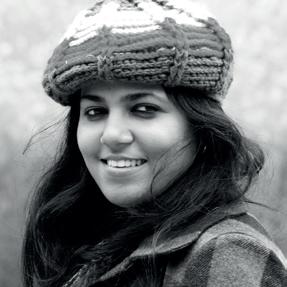
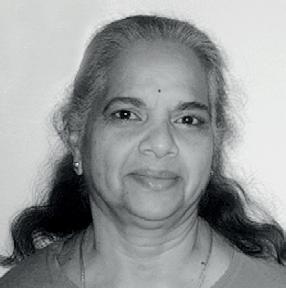
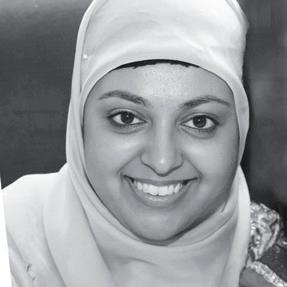




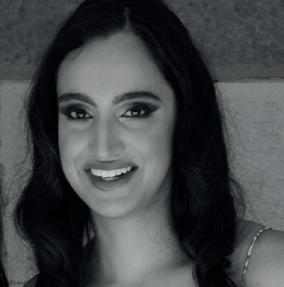



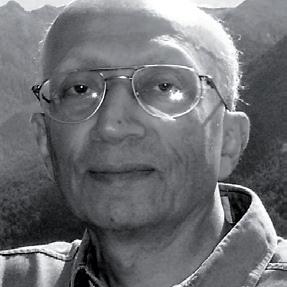
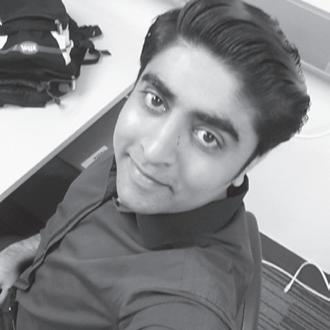

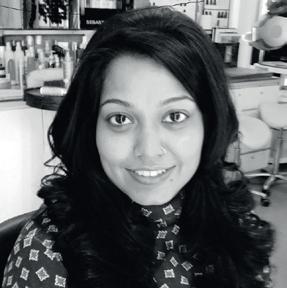
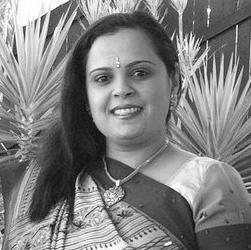


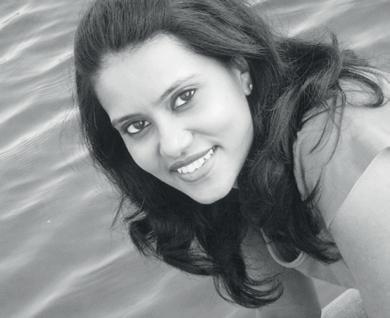


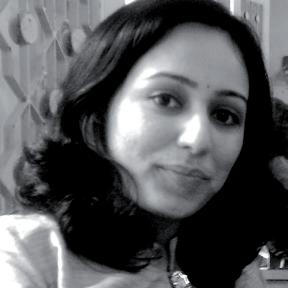
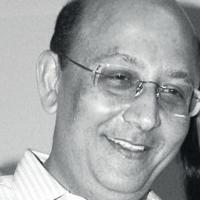
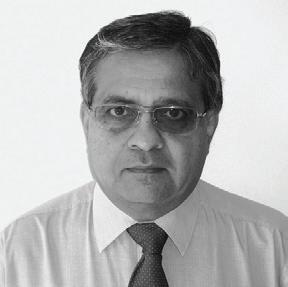

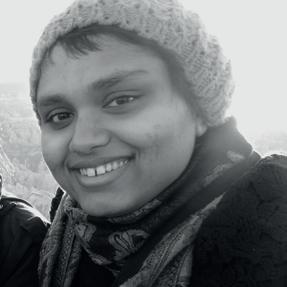
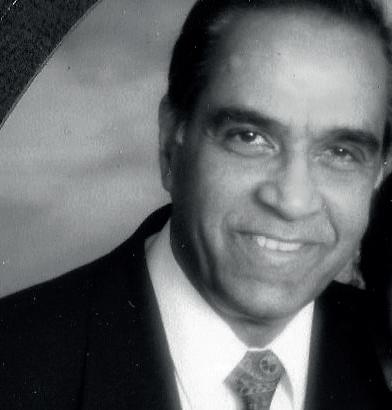
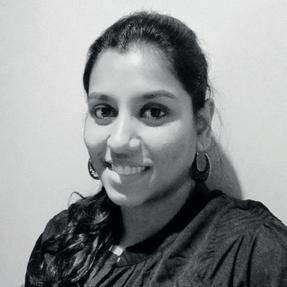
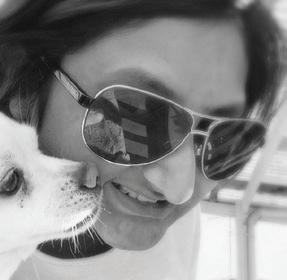

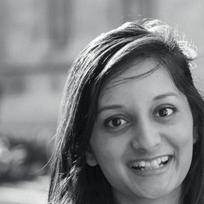
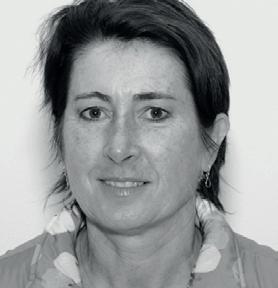
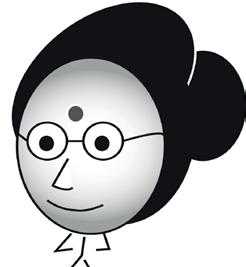
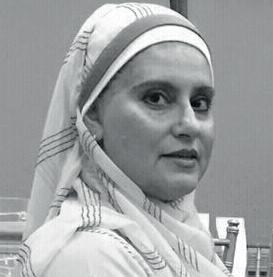
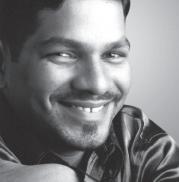

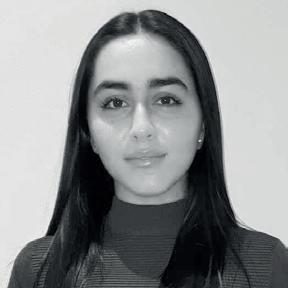
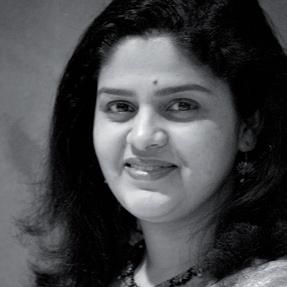
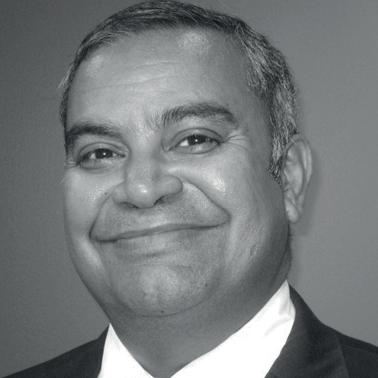
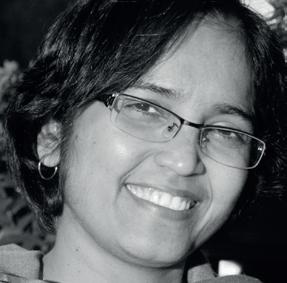
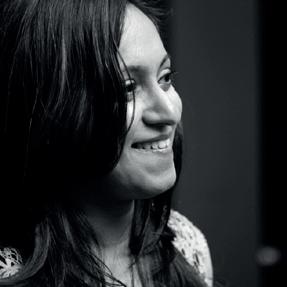

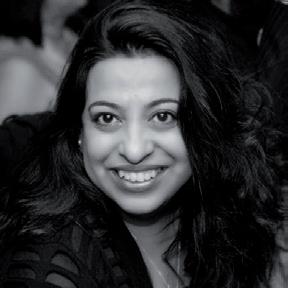

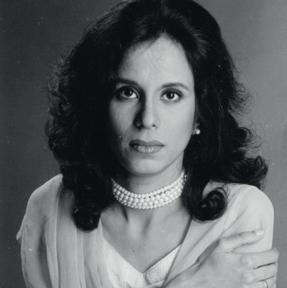
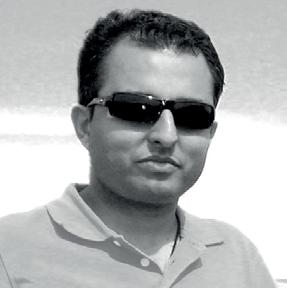

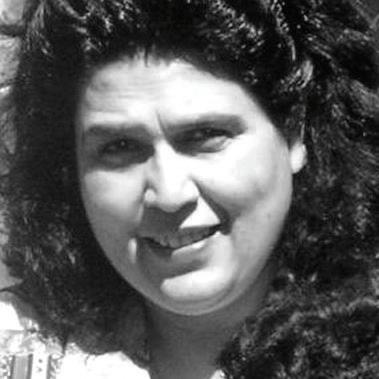





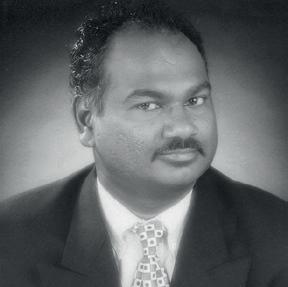
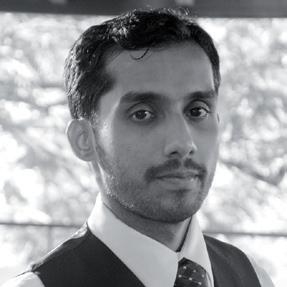
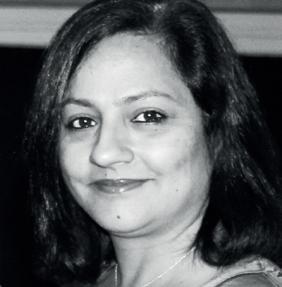

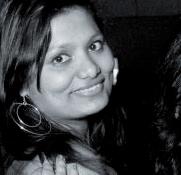
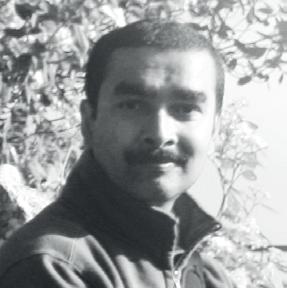


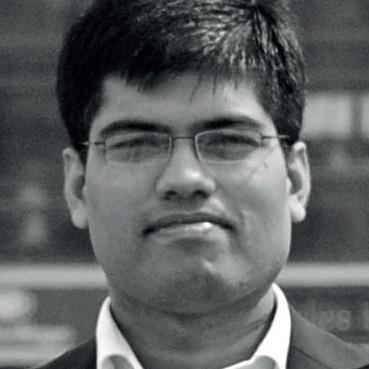
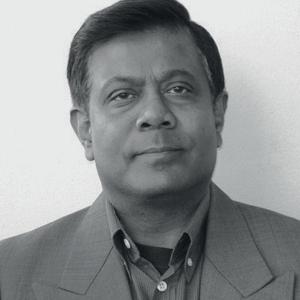



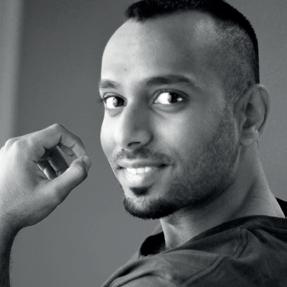
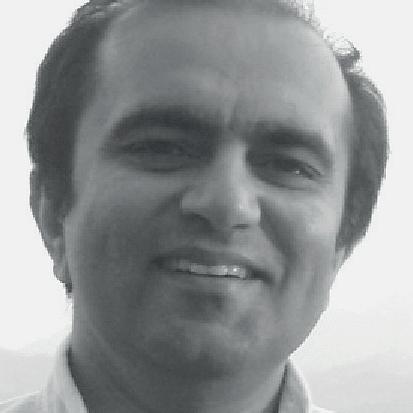
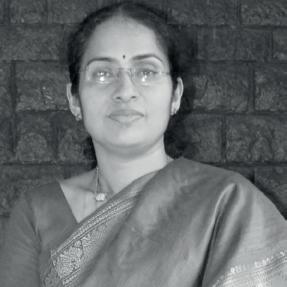
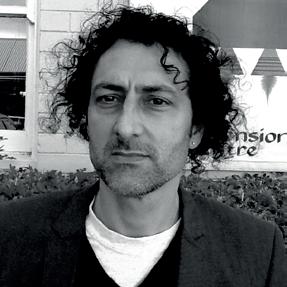
Bookings
Sponsored by:

UNSW Library Lawn, UNSW Sydney, Kensington
Wed 6 Feb, 5.15pm – 6pm, Free
Gandhi Oration: Tim Costello

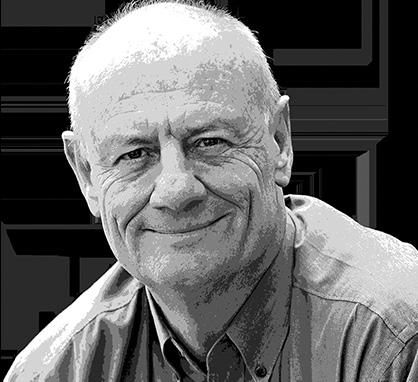
The Roundhouse, UNSW Sydney, Kensington
Wed 6 Feb, 6.30pm – 7.30pm, Free
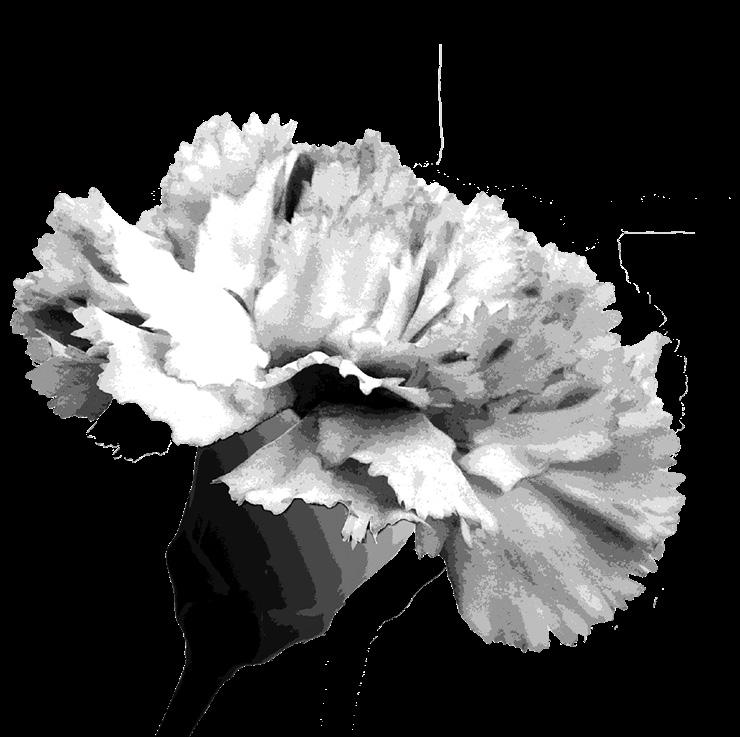

In 2018, the New South Wales Board Education Standards Authority (NESA) updated the HSC and Preliminary curriculums for Chemistry and Physics to have a stronger focus on depth of scientific concepts. Students now face a more challenging, conceptually difficult HSC which covers more olympiad and early university content.
Tuition colleges across NSW have been re-writing their curriculums to stay up to date with the changing HSC. Our staff already had significant Chemistry and Physics Olympiad experience, even at an international level.
We have also had Mr Mansour Khoury ,one of James Ruse Agricultural Highschool’s most experienced Science Teachers, join our staff to guide Ace through an exciting transition as Head Teacher.
The excellence of our work and staff has meant through this curriculum update, more students than ever have changed to Ace for their Chemistry and Physics tuition. Come and join the most successful, most highly awarded tutoring team in the state.

